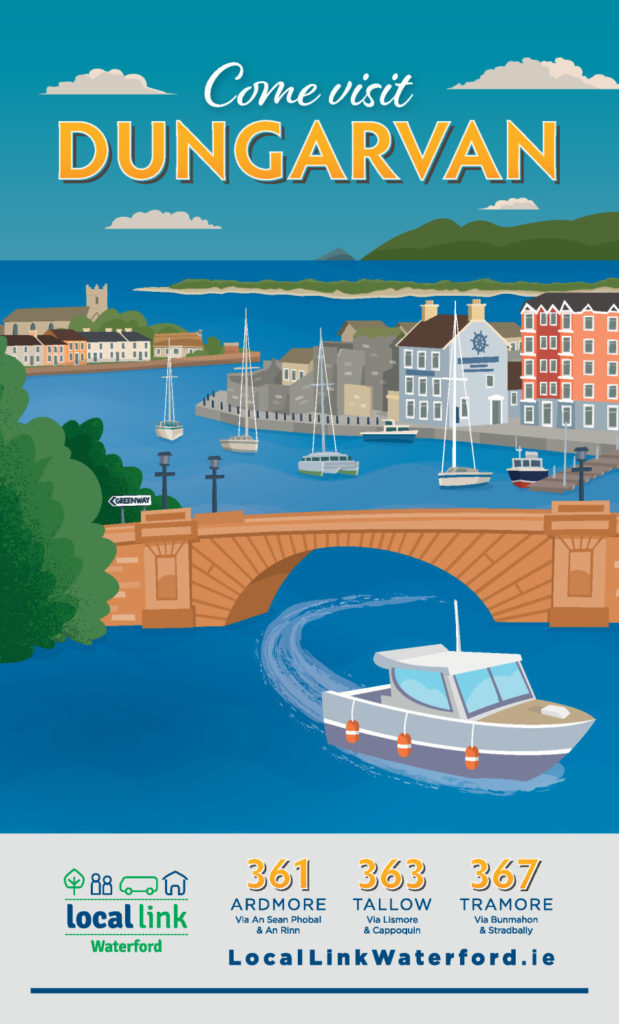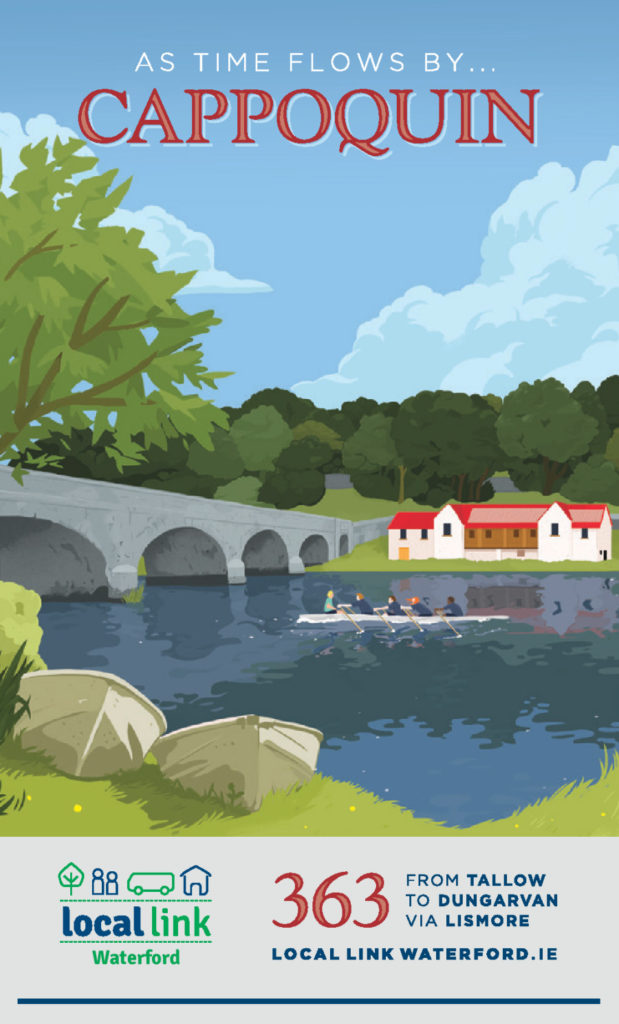Look out for these fine Bibby products. Source, from a fascinating archive of modern illustration.

Transport Planner based in Nenagh, Ireland. Main site: https://thomas.bibby.ie
Look out for these fine Bibby products. Source, from a fascinating archive of modern illustration.

Cooked: Smoky Tomato & Halloumi Bake. This was nice. Halved the halloumi and doubled the beans. Had bread with it for carbs, but tasted like it might be good with a baked potato.
This was an annoying issue to solve – I was creating spreadsheets in python using openpyxl. Opening them in desktop Excel (on macOS, but I’ve seen this error on Windows too) resulted in an alert: “We found a problem with some content in ’file.xlsx’. Do you want us to try to recover as much as we can? If you trust the source of this workbook, click Yes.”. Excel was able to repair the file fine, but it was annoying. Looks like this might have been an issue openpyxl version 3.1.2 – installing 3.0.10 in a venv solved the issue.
Connecting Ireland is the National Transport Authority’s rural mobility programme. The review of Phase 3 of the programme has lots of happy numbers: in 2024 there were 17 new bus routes, 28 enhanced bus routes, 120,000 more kms per week, passenger journeys up 139% 2019-2024 and 38% 2023-2024 to 8 million journeys in the year. More to come in 2025! https://www.nationaltransport.ie/publications/connecting-ireland-phase-3-implementation-review/

Irish Rail now offer train tickets that automatically appear on your lock screen when it’s time to travel. Apple Wallet, so iPhone only for now.


Cooked: a combo of two Lidl recipes – Red Lentil Dhal and Hearty Lentil Curry. Needs at least an hour and minding a bit so the lentils don’t stick. Added a bit more liquid towards the end.
Cooked: Slow cooker veggie bolognese – BBC. Pretty good. Added a tsp of Marmite and more (frozen) mushrooms.
“Nobody would write a play entitled A Technically Equivalent Bus Named Desire” — Hacker News comment on an article about Very Light Rail in Coventry
Recent views from the bus: Mullranny Co. Mayo from Local Link route 978 to Béal an Mhuirthead, and Portroe Co. Tipperary from Bus Éireann route 323 to Limerick.
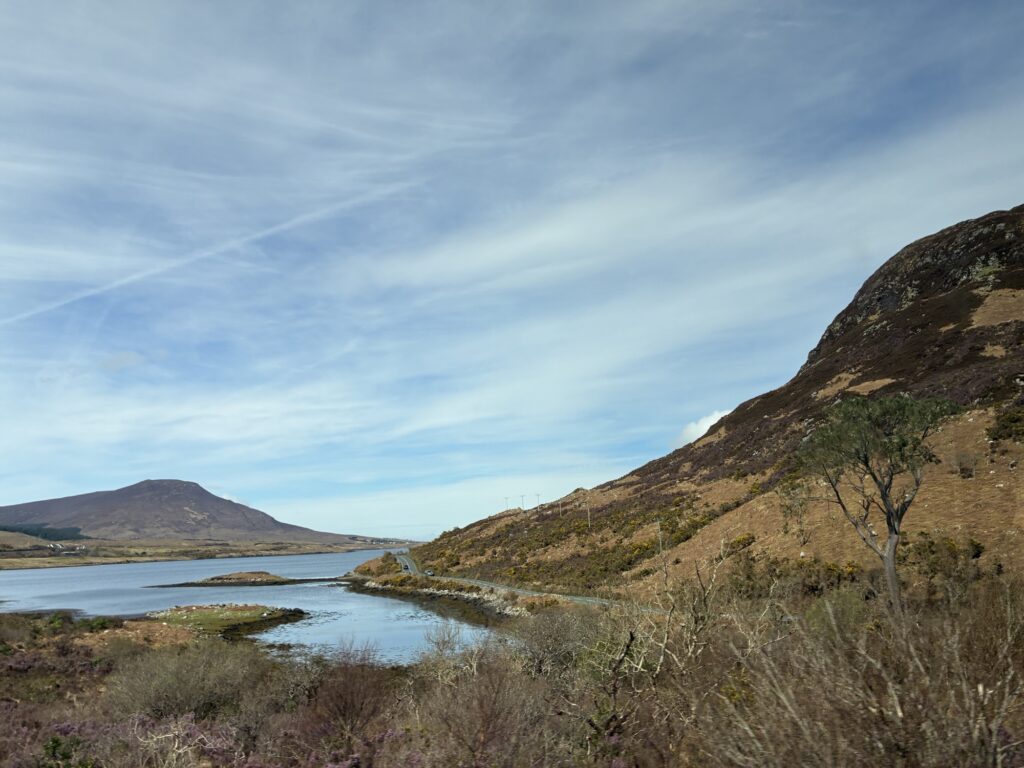
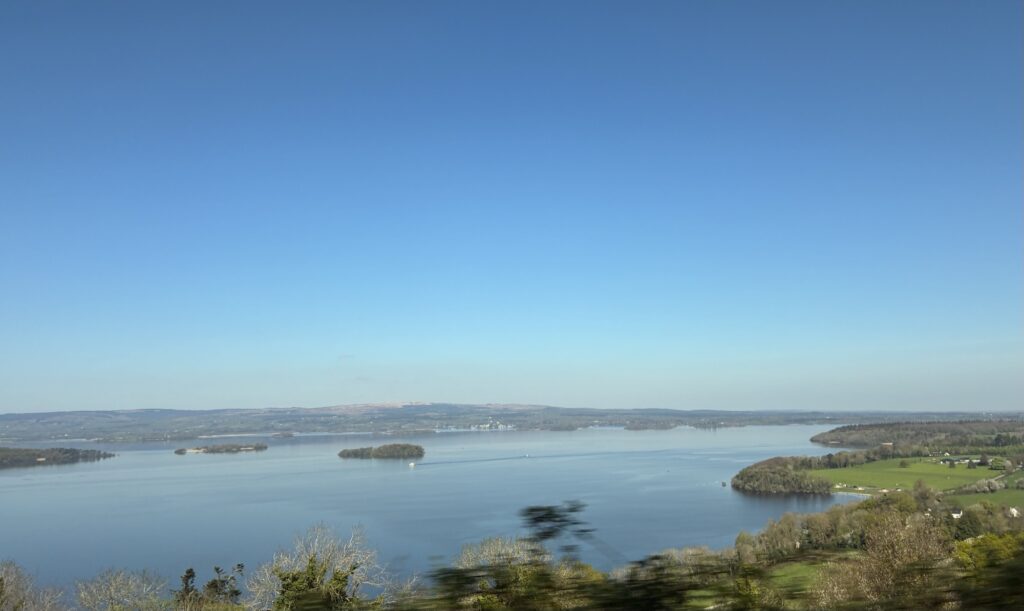
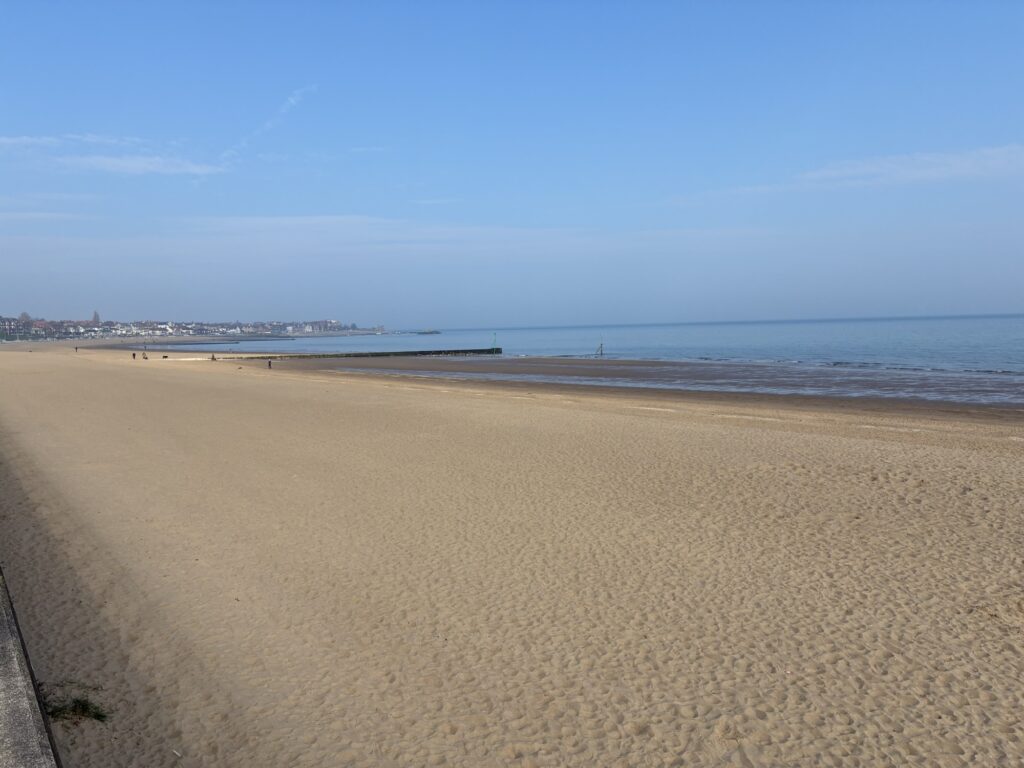
Bae Colwyn
The US government has axed 18F, an internal government tech consultancy: perhaps a minor event amidst the chaos in that country, but sad nonetheless. As an example of their work, this non-technical guide on how to reduce risk in software projects is excellent. https://guides.18f.gov/derisking/federal-field-guide/
Somehow “raddoppio selettivo” sounds a bit more fancy than plain old passing loops https://marcochitti.substack.com/p/the-long-modernization-of-the-italian
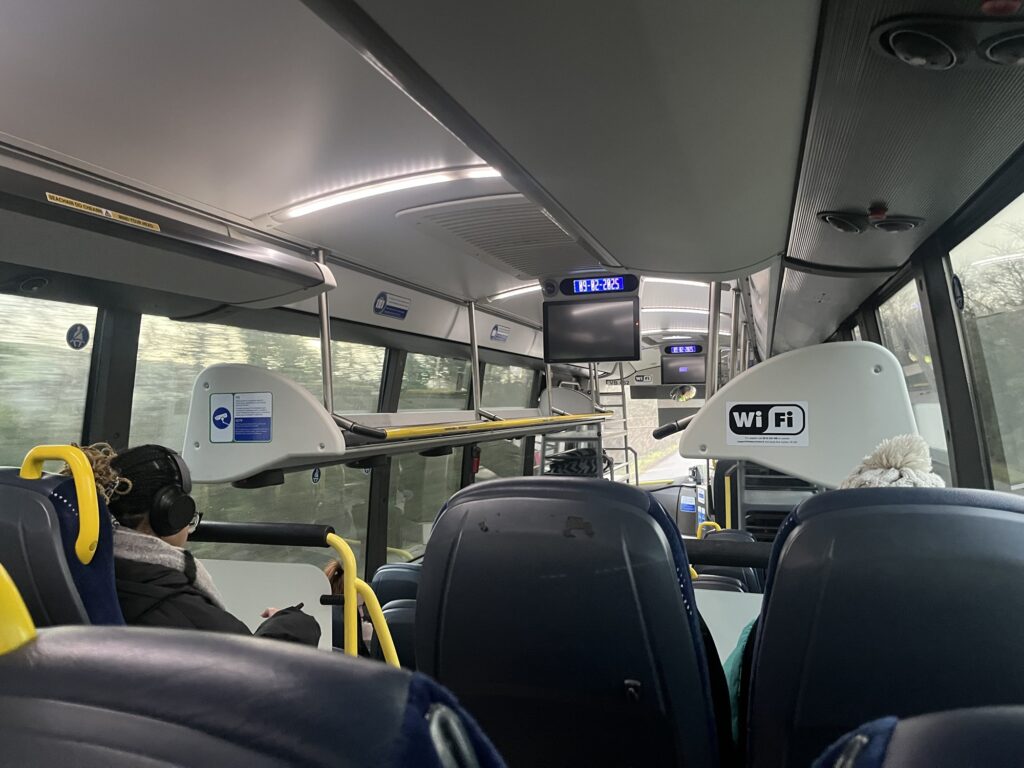
The calm of the 72 bus from Athlone to Limerick

Nenagh is becoming quite the transport hub. Taken just before noon on a Friday in January.
Interesting paper on the differing emissions impacts of long and short haul flights: “Flights of less than 500 km account for 26.7 % of flights but only 5.2 % of fuel burnt, while flights of 4000 km or more account for just 5.1 % of flights, but 39.0 % of fuel burnt.”
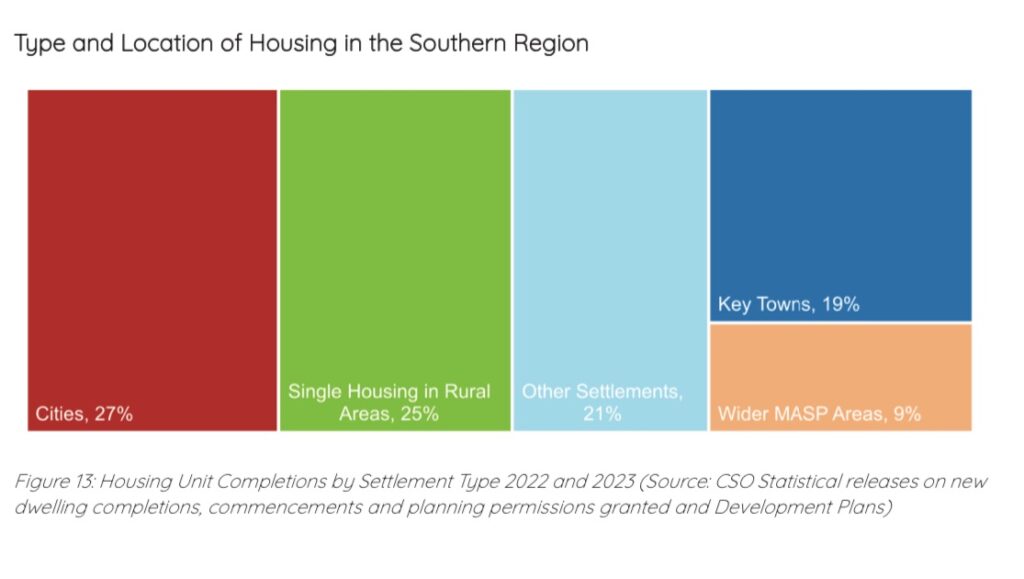
Housing unit completions in 2022 and 2023 in Ireland’s Southern Region (which includes the cities of Cork, Limerick and Waterford) by settlement type. From the Southern Regional Assembly’s submission to the Draft First Revision to the National Planning Framework, September 2024 (PDF).
The situation in Sudan and South Sudan is just heartbreaking. Powerful reporting by Sally Hayden in the Irish Times.
Know anyone living near Kells Co. Meath, or Virginia and Ballyjamesduff Co. Cavan? The National Transport Authority (NTA) has launched a public consultation on an enhancement to Route 187 between Kells and Virginia.
Proud to stand with over 50 people today in Roscrea at a vigil organised by the Tipperary Anti-Racism Network. Refugees welcome!
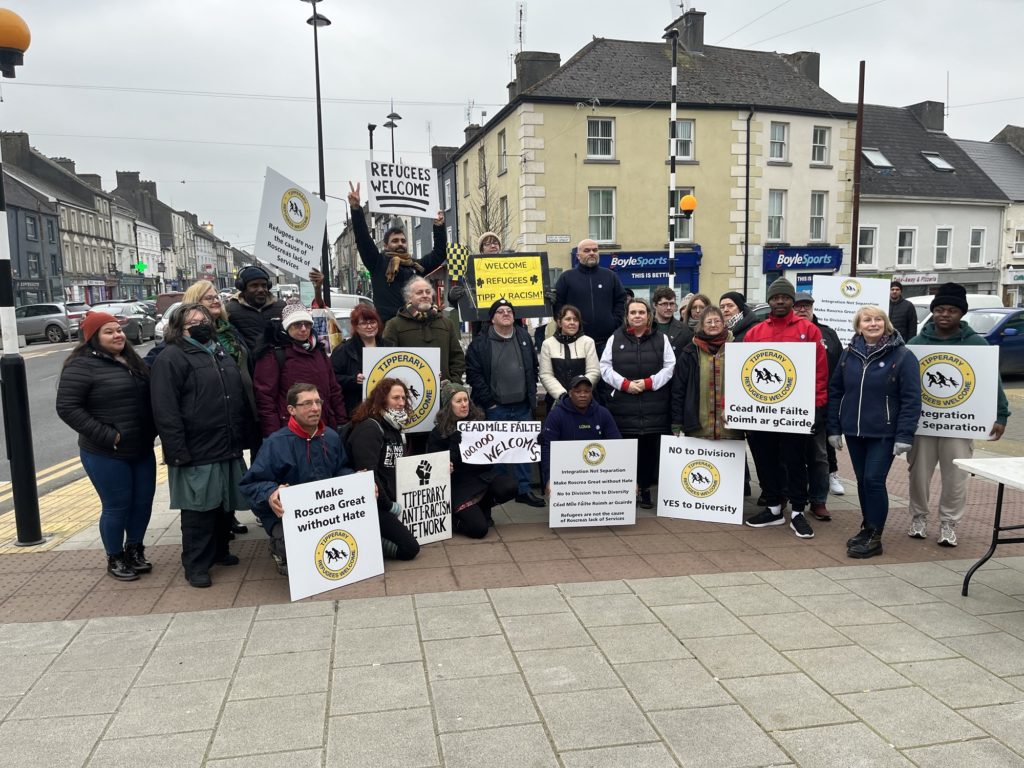
A rather rushed submission on the Slane bypass project, sent in before submissions closed yesterday
The first edition of this book by Jarrett Walker changed my life: it inspired me to quit my job as a software developer to go and work as a transport planner. I can’t wait to read the second edition, which you can preorder now.
I came across two fascinating articles today: one on how goitre was defeated in Switzerland and another on how the world forgot to prevent scurvy in the 1800s.
“Are you gonna open the door for me, hay?”
Sponsored, but captures the experience of rural public transport in Ireland very well.
Happy Christmas to everyone except the people at Scott Tallon Walker architects, who think an 82cm wide (less than half the recommended absolute minimum) footpath is acceptable on a (one way) shopping street in the new Nenagh public realm plan.
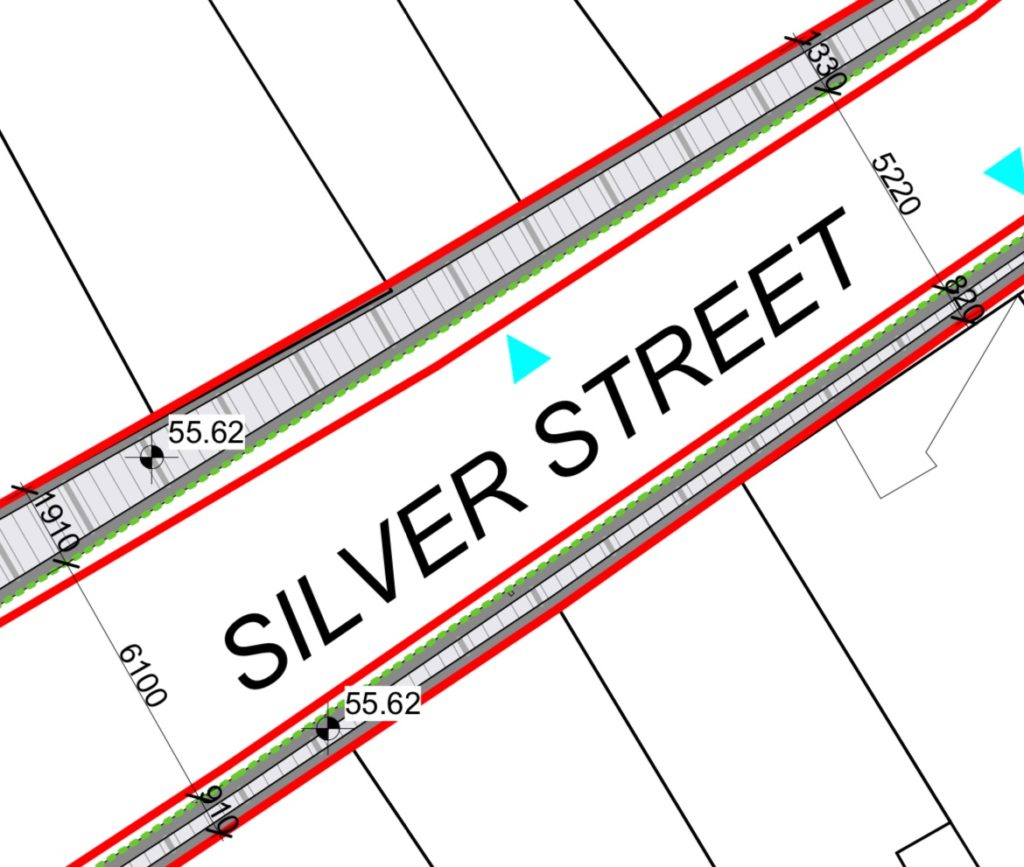
This traffic warden in Nenagh is my hero.
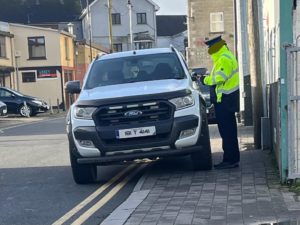
We pay an enormous price for our automotive addiction—in congestion, time wasted, neighborhoods destroyed, emissions pumped out, pleasant streets subordinated to brutal expressways—but telling the addict that the drug isn’t actually pleasurable is a losing game. There is some slight hope in saying that it isn’t healthy, and that the replacement for the drug is about as good. But understanding this emotional infrastructure in favor of cars is vital to imagining their possible replacement.
How to Quit Cars | The New Yorker
New all-electric Local Link route 438 starting Monday 22 May, connecting villages north of Galway City to Galway, Headford and Tuam with 3 buses/day, 7 days/week. This service will bring a number of Galway villages who were not previously served by timetabled public transport on to the national network.

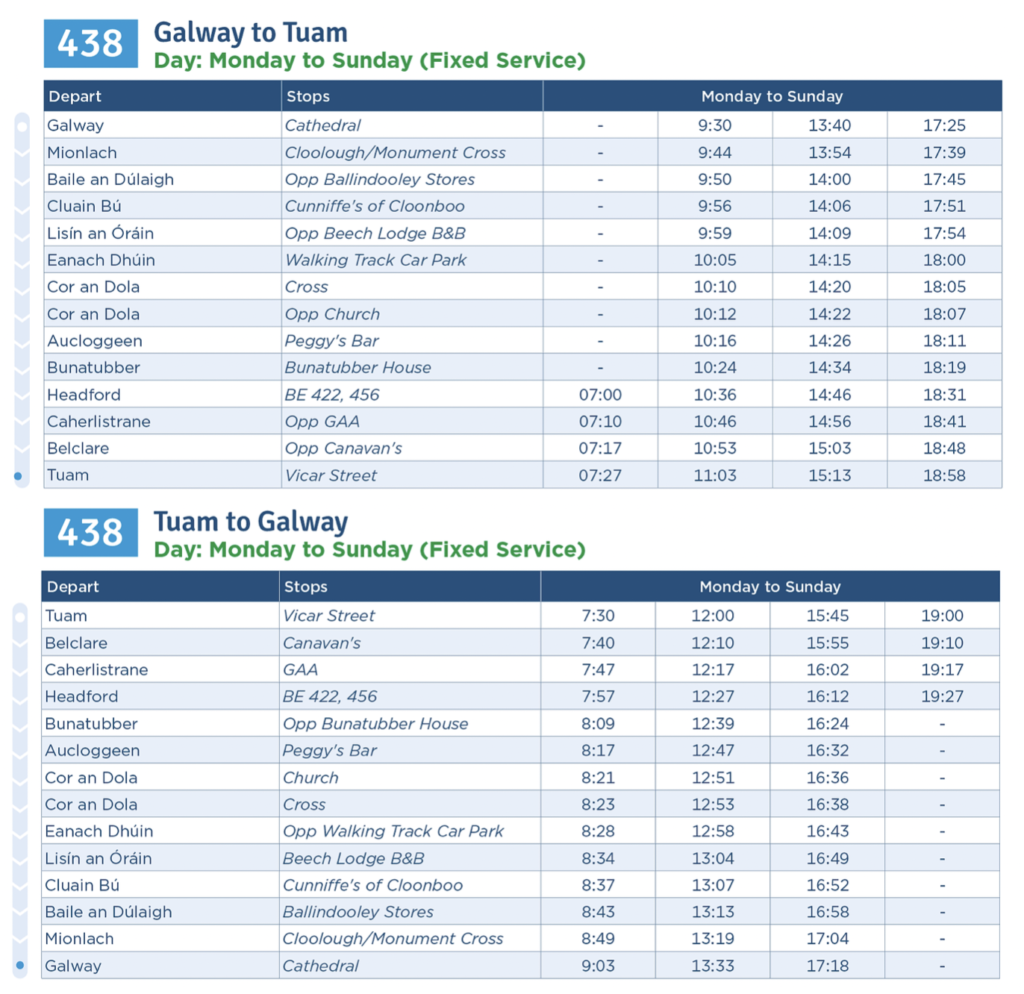
Nice to see printed timetables in Limerick station for the expanded Scariff and Mitchelstown services introduced under the Connecting Ireland programme.
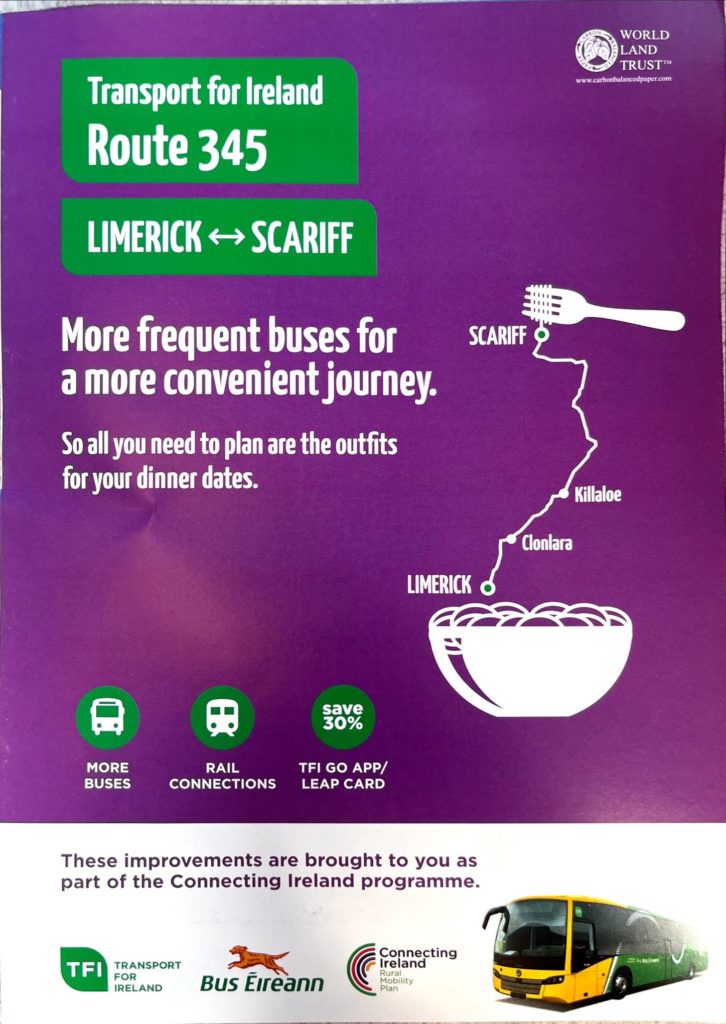
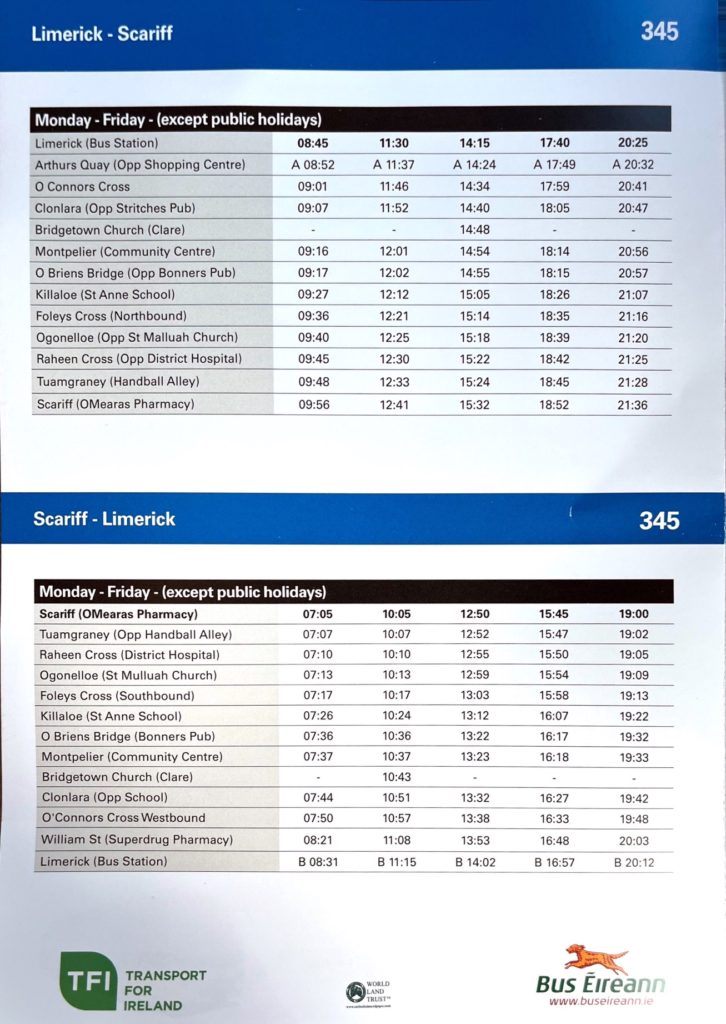
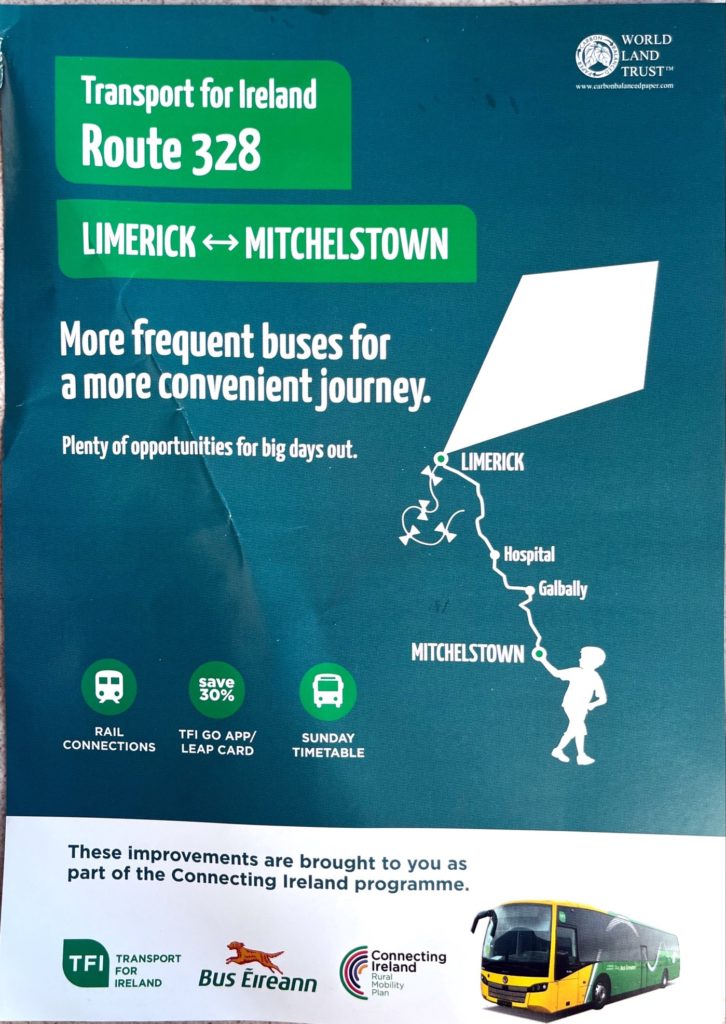
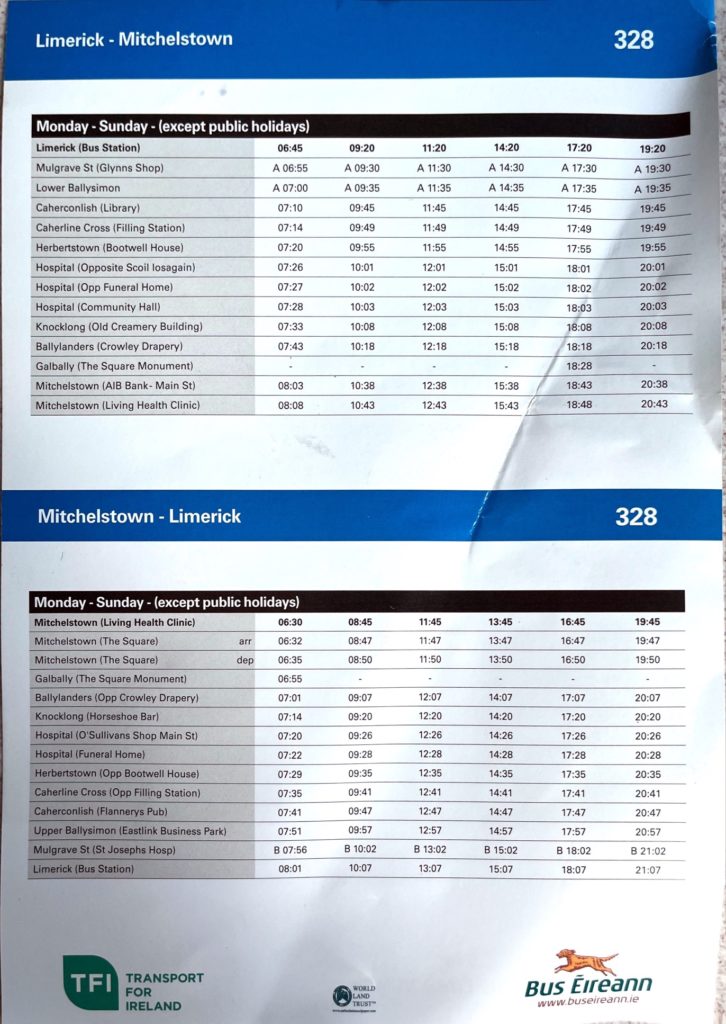
The National Fares Strategy summary was released last week: in the future rail and bus fares outside Dublin will be calculated from a boarding charge and a charge based on km as the crow flies. I built a calculator where you can vary both charges and see the impact on intercity rail fares.
A new one-way, two-lane traffic layout with no cycle facilities or wider footpaths is proposed for the centre of Nenagh which could increase traffic levels through the town. Deadline for submissions is Weds 4:30pm, here’s mine: https://thomas.bibby.ie/submission-on-the-proposed-traffic-calming-measures-on-pearse-street-mitchel-street-emmet-place-kickham-street-and-silver-street-nenagh/
A CYCLe Optimised Protected Signals (CYCLOPS) junction recently installed in Manchester, UK.
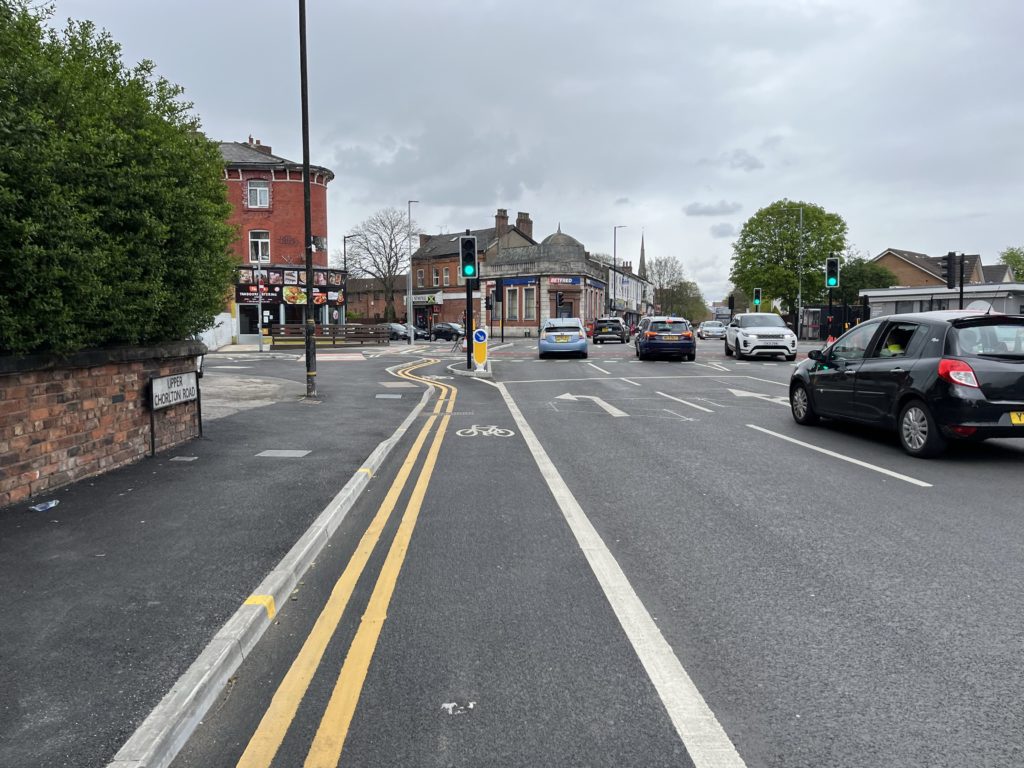
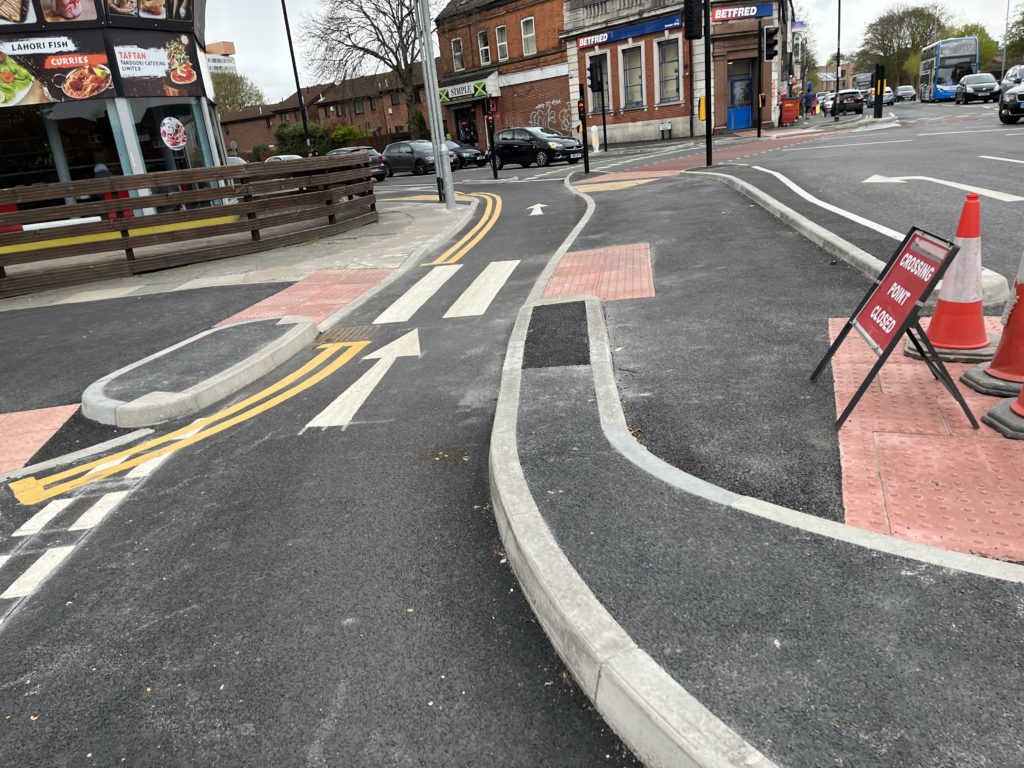
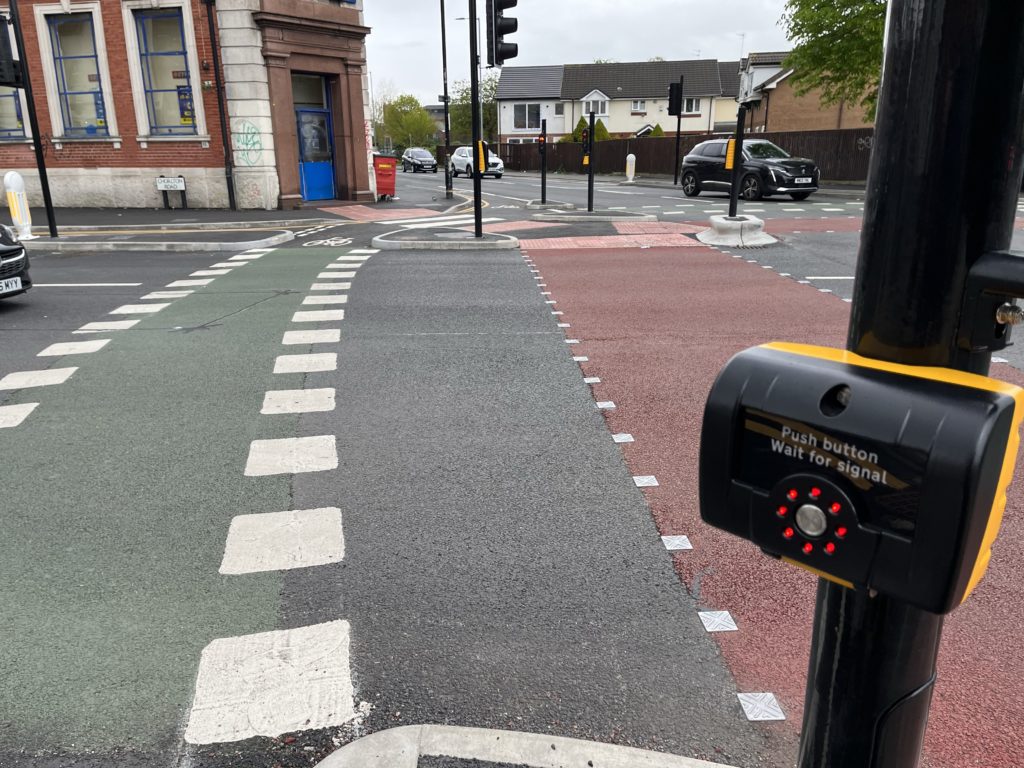
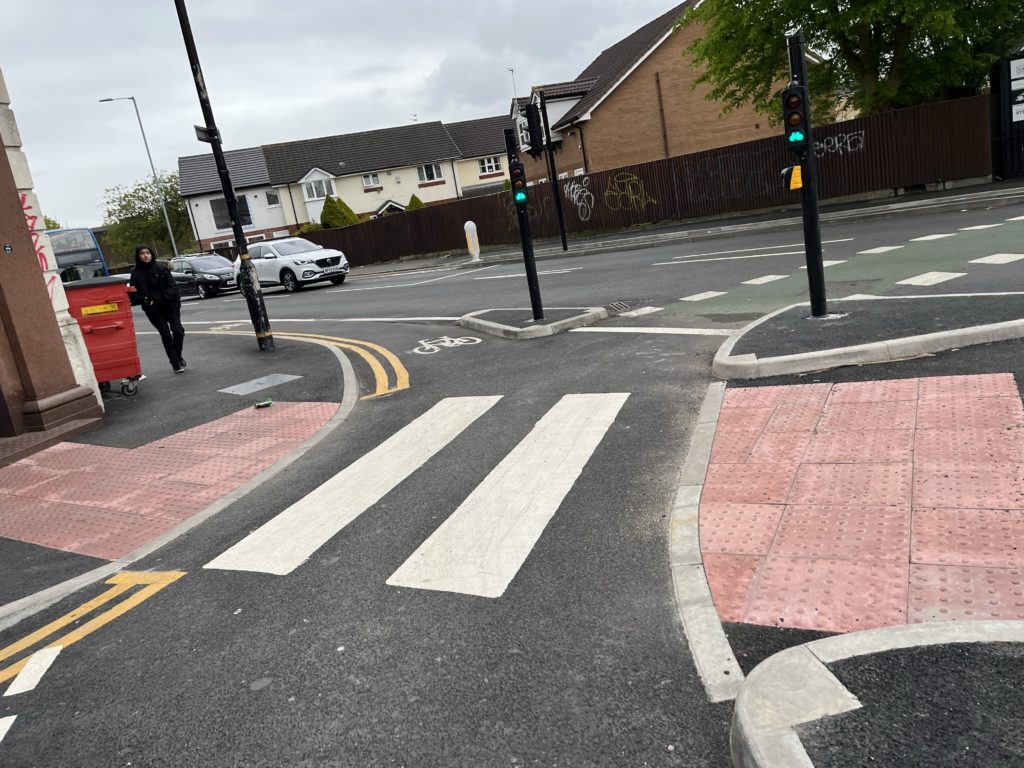
Three examples of “priority narrowing” or a “single lane working chicane” in a residential area in Hull, UK. The first two examples have associated uncontrolled pedestrian crossing points, the first in the middle (in front of a primary school) and the second in front of the chicane.
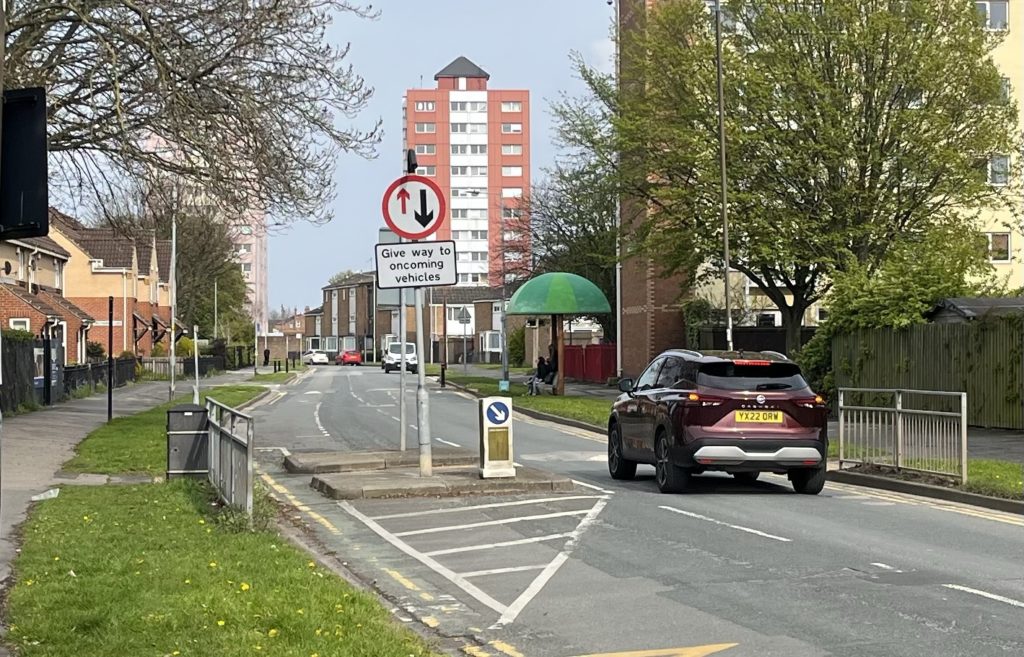
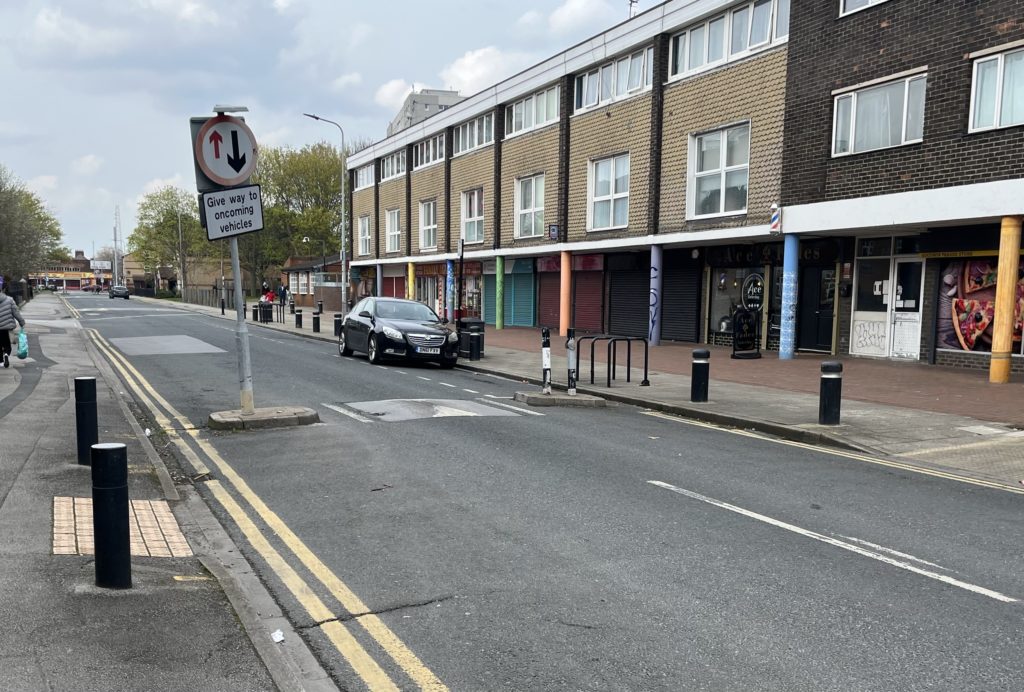
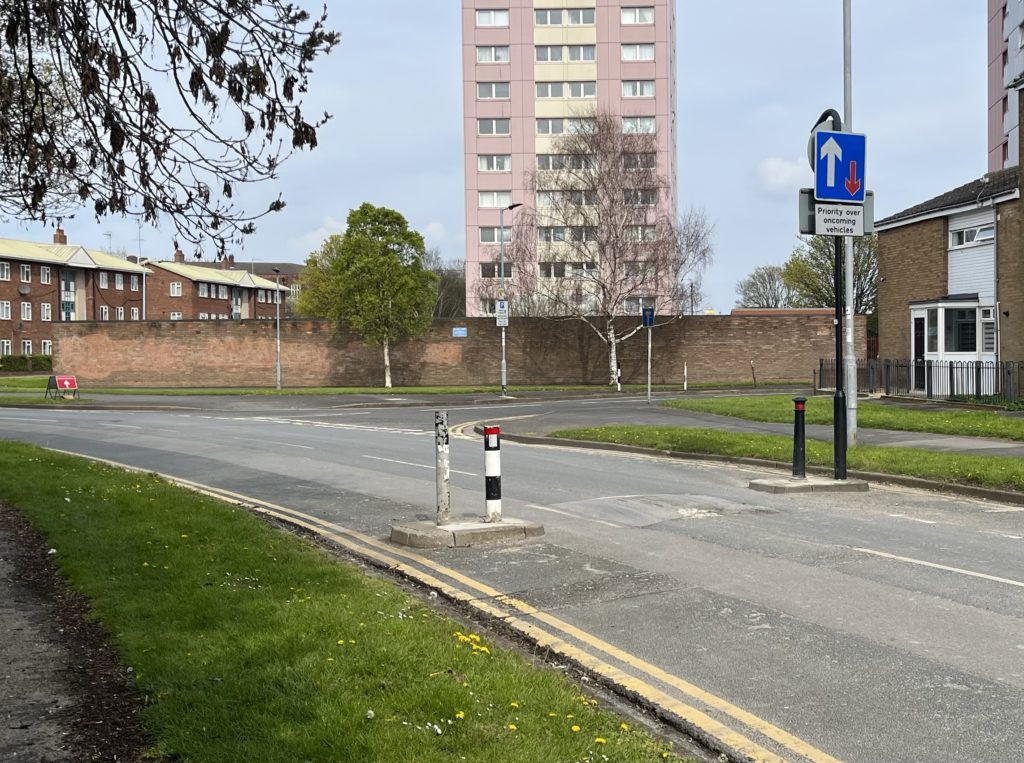
Good news for commuters on the east coast of Ireland: from early May the 133 Wicklow-Dublin bus will increase frequency from hourly to every 30 mins; and the 101 Drogheda-Balbriggan-Dublin bus will switch to a 24 hour service with buses every 20-30 mins during the day and hourly through the night.
Fascinating paper (PDF) by Shane Timmons and others at the ESRI looking at how active travel infrastructure changes behaviour, how to design infrastructure to encourage its use, and how to overcome local opposition to new infrastructure. It will be of interest to anyone planning, implementing or campaigning for better safer and healthier roads and streets.
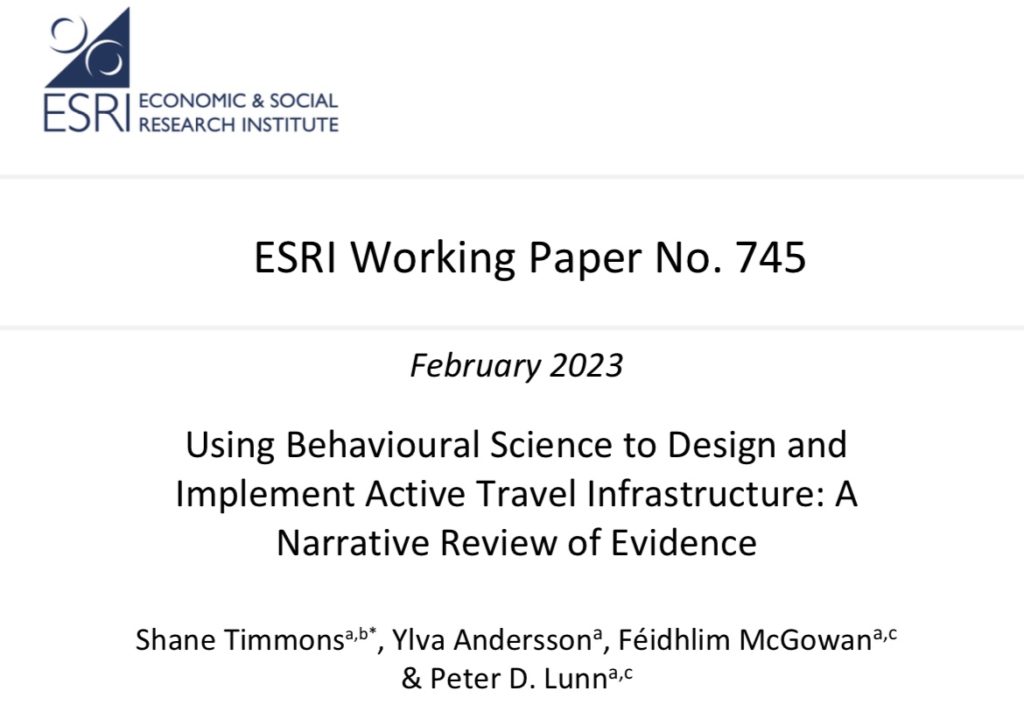
Scrabble as Gaeilge, ar fáil ó Easons. Bhaineamar taitneamh as!
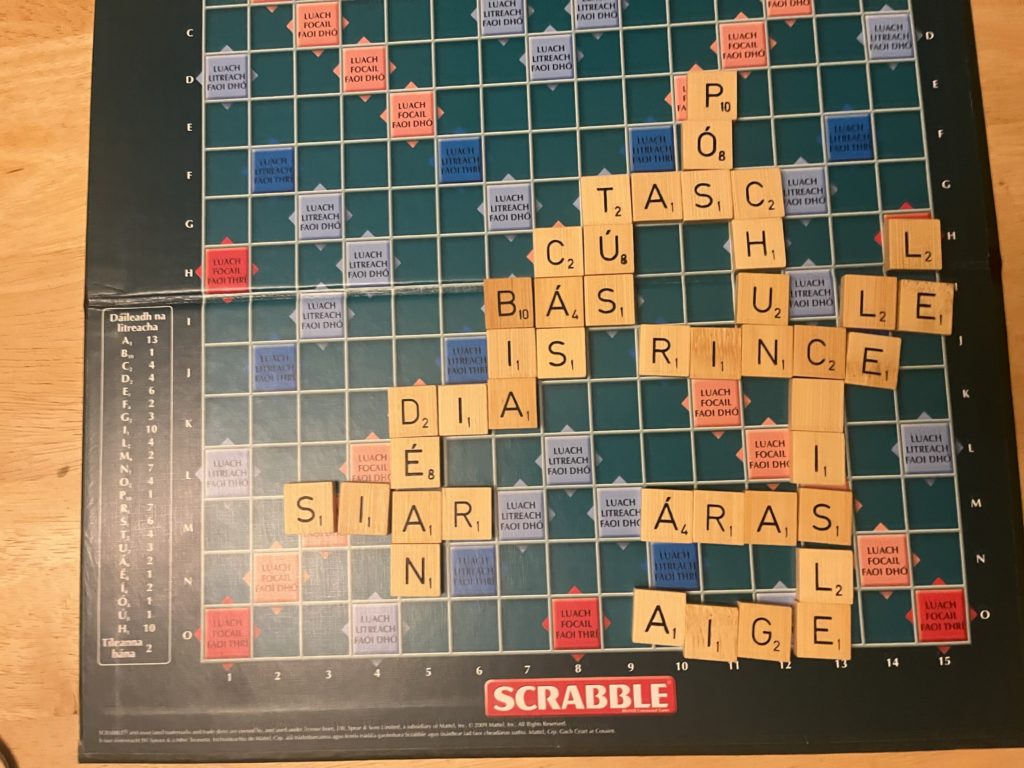
Maps showing (a) new/improved rural bus routes introduced in the last 12 months, and (b) planned new/improved routes planned for 2023. From a programme update by the National Transport Authority’s Connecting Ireland team which was released today.
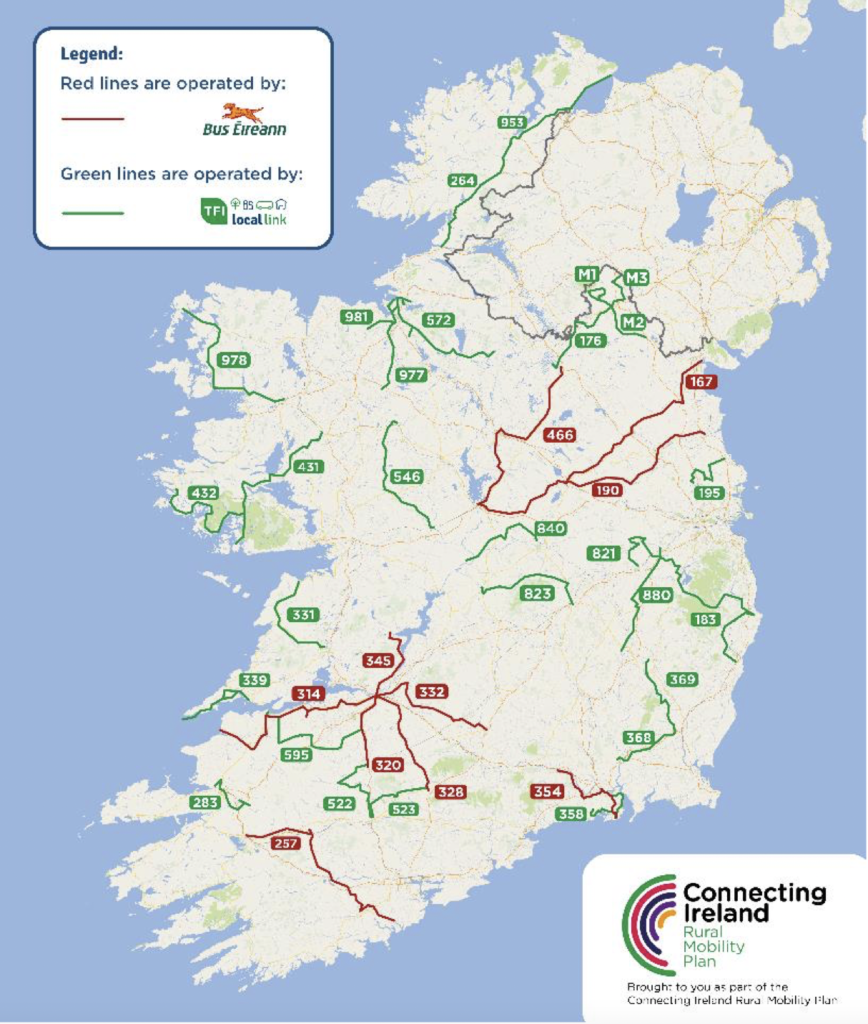
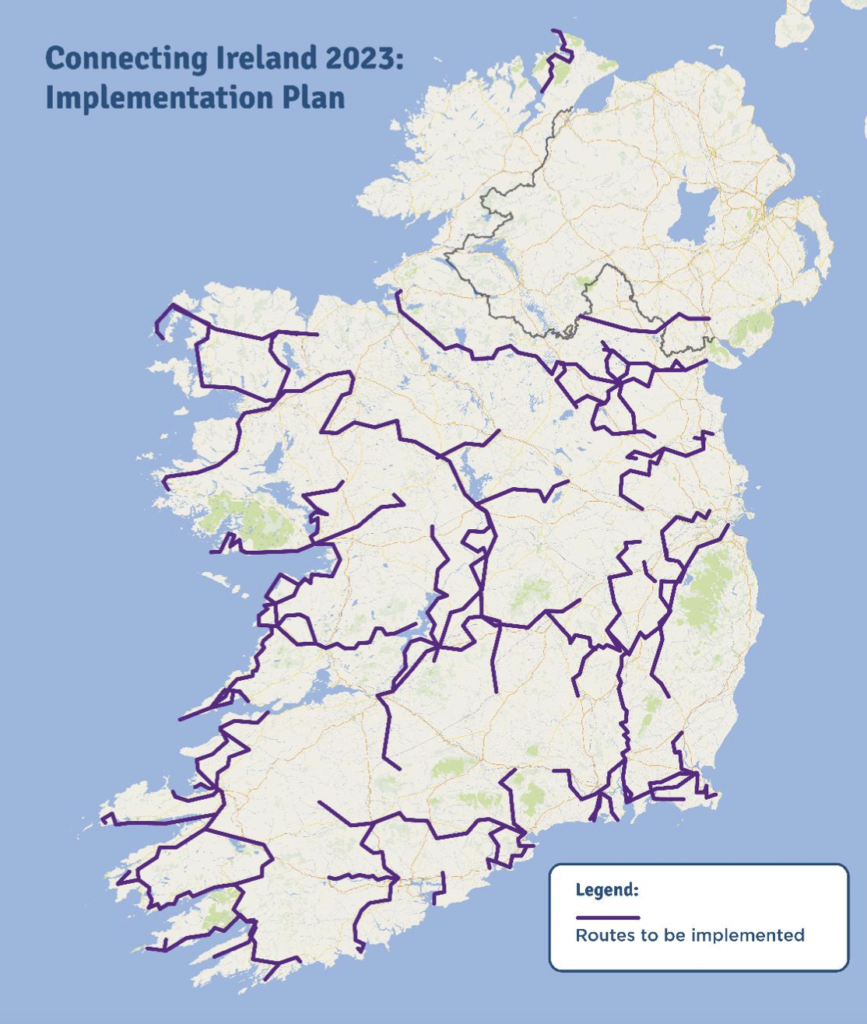
In an ideal world it would be obvious to us all that parking your vehicle entirely on the footpath near a large primary school is anti-social and wrong, not to mention a road traffic offence; in the meantime it’s great to see fines starting to being issued in Limerick.
Thank you Limerick Council! (Hopefully we’ll also see fines for the other scourges of parking in (a) disabled parking spaces without a permit and (b) bus stops too)
New CSO stats today show a big increase in bus journeys outside Dublin over pre-pandemic levels. Graph shows bus passenger journeys outside Dublin for the first four weeks in January in 2023 vs 2019. According to the CSO by Week 8 this 2019-23 increase had reached 31%.
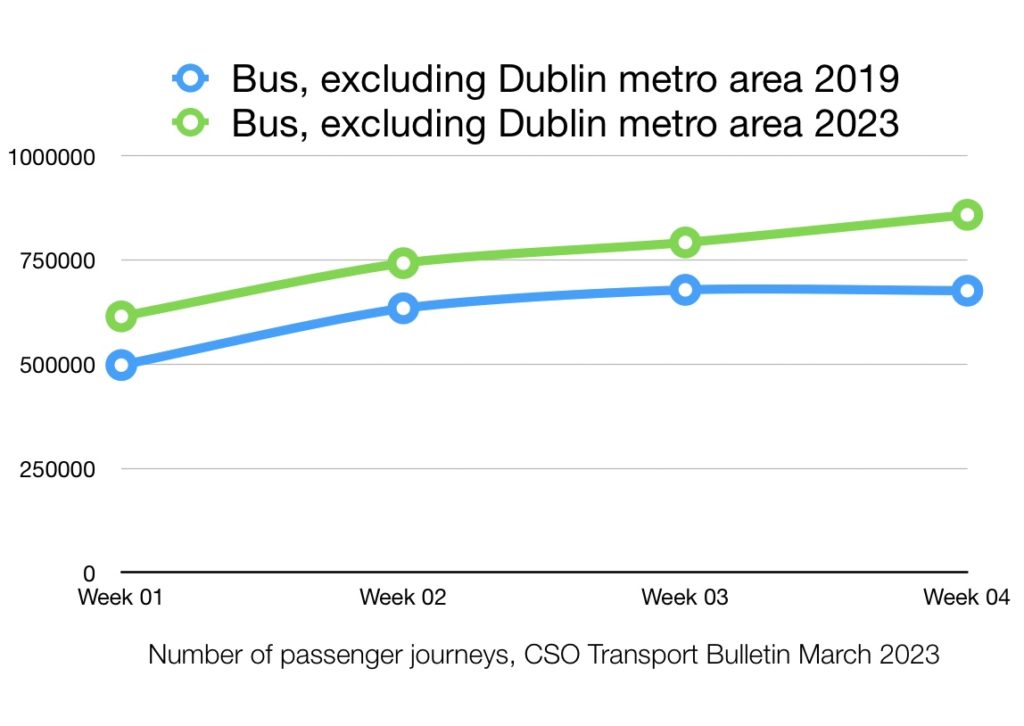
In addition, bus journeys in Dublin have also increased (off a higher base) over 2019 levels. By Week 8 the 2019-23 increase had reached 10%. Great to see such an increase in numbers especially outside the capital.
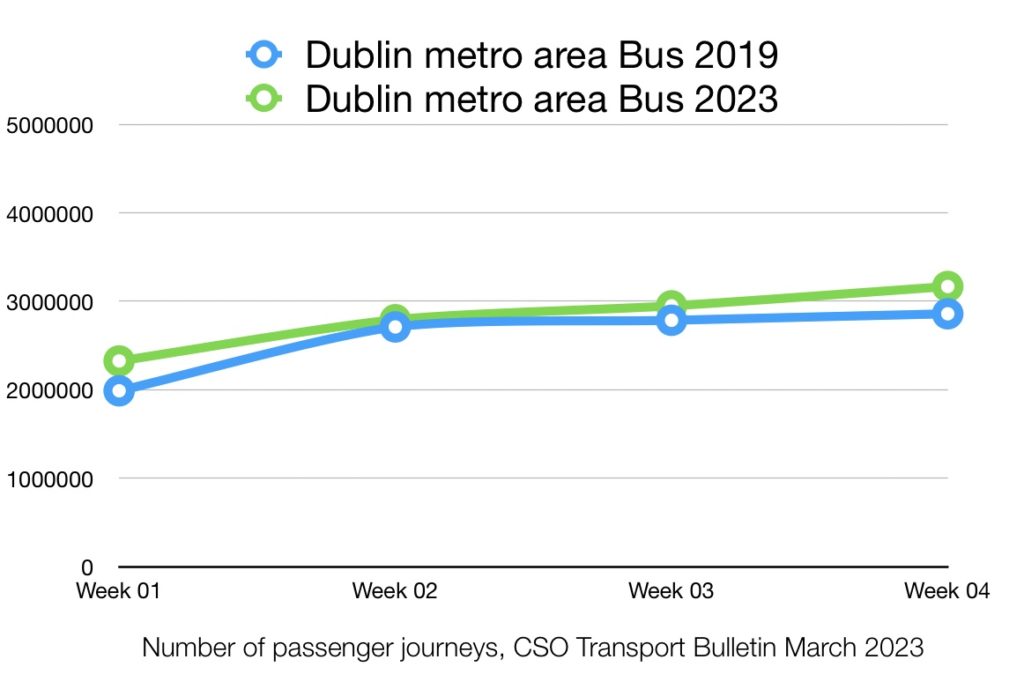
This is a lovely article by The Ranty Highwayman. Even though it’s ostensibly about designing roads and streets for efficient and safe movement (and it is very wise and insightful about this topic) I think it’s also about design in general: the importance of empathy with all those those who will encounter your designs; the need to consider a wide range of people and their needs, and the principle that while listening to people is important, this does not mean that consultation should override the application of good design principles that consider everyone’s needs. If that sounds difficult, that’s because it is!
When it comes to improving transport we sometimes focus too much on price, when space and capacity can have a much greater impact. Great article in the Irish Times with nuggets of wisdom from transport experts Dave O’Connor, Lorraine D’Arcy and Brian Caulfield.
Fascinating process going on with the Sustainable Urban Mobility Plan in Kilkenny. Public consultation and focus group reports published this week. “A city that has shared space for all, is uncomfortable for cars…all-inclusive, busy with lots of people”
The focus group consisted a wide range of stakeholders from Kilkenny, who got input from experts such as Alison Harvey and Brian Caulfield. The public consultation focused on younger people, whose voices are often absent from transport discussions. Looking forward to following this process, it could be a template to follow across the country.
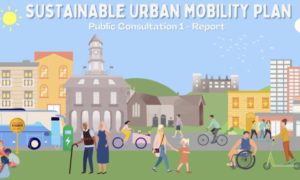
Great to see the draft CycleConnects national cycle network (1) already feeding in to local area plans: here’s the Roscrea Local Area Plan (2) published on Friday which has incorporated most of the suggested CycleConnects network into their transport plan (with a few omissions). A national plan is invaluable to show where local investment should go for cycling.
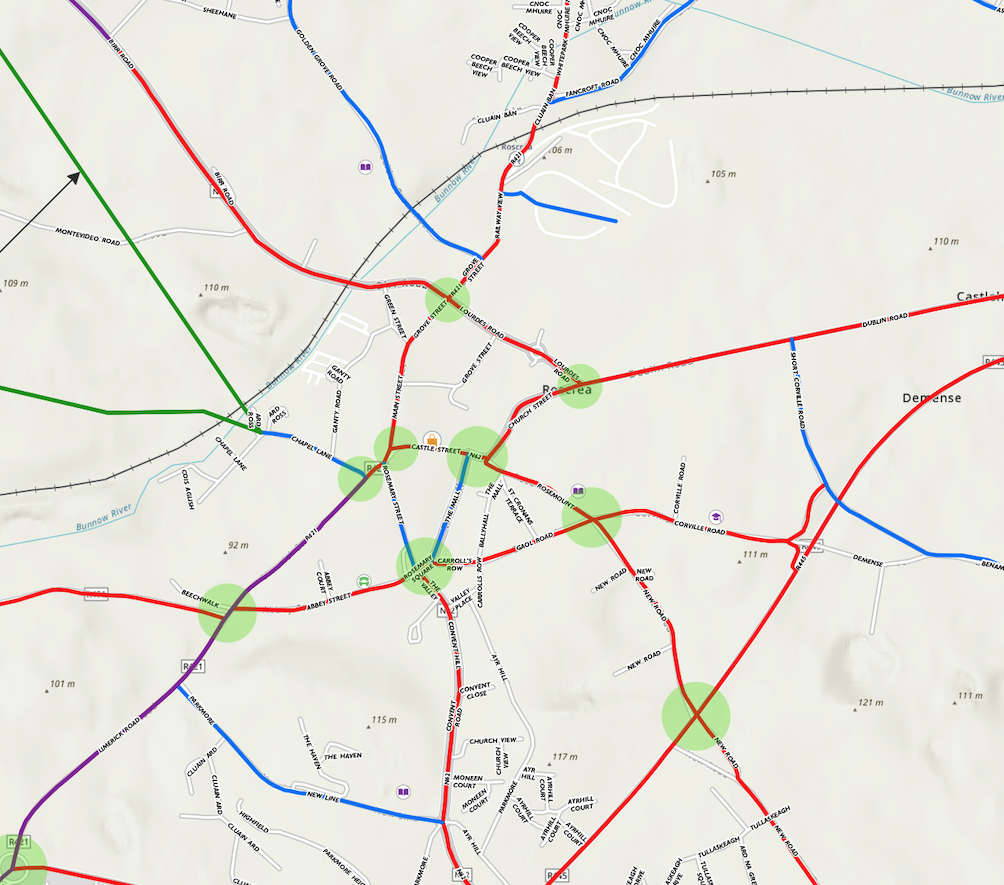
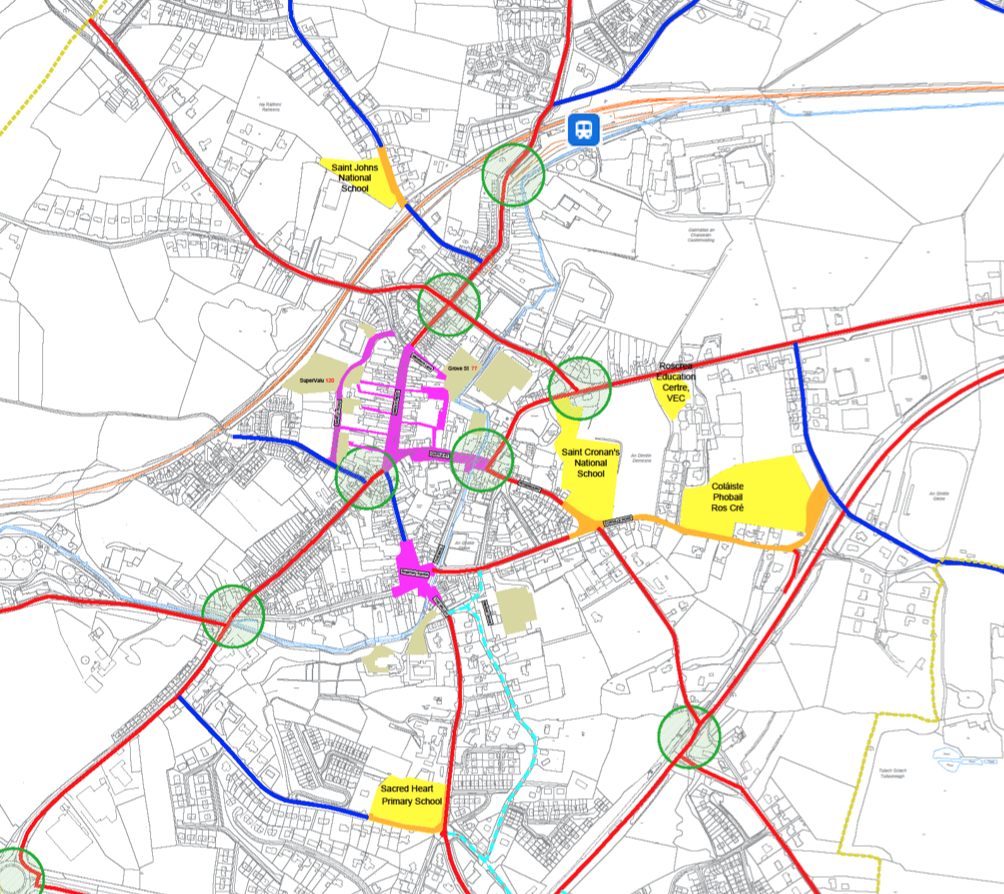
I’m going to try and make a submission asking for the omitted parts of CycleConnects to be reinstated, to ensure that all primary routes are segregated for cyclists and to incorporate the proposed Birr to Roscrea greenway.
Other measures needed include a reduction in traffic speed across the town, much better pedestrian facilities, the addressing of particular dangerous stretches including the bypass and more detailed measures around facilitating public transport including a top class bus facility to facilitate all the new routes going to Roscrea with Connecting Ireland. But it’s a good start!
Delighted to see the consultation for BusConnects Limerick, and the city is lucky to have experts from the firm founded by Jarrett Walker designing its network. Lots of good in it, but disappointed however to see half of the high frequency routes will not serve the city’s bus/rail station, so no direct transfer to the two universities or the two main industrial estates. Hopefully changes can me made. Public consultation: https://busconnects.ie/limerick/
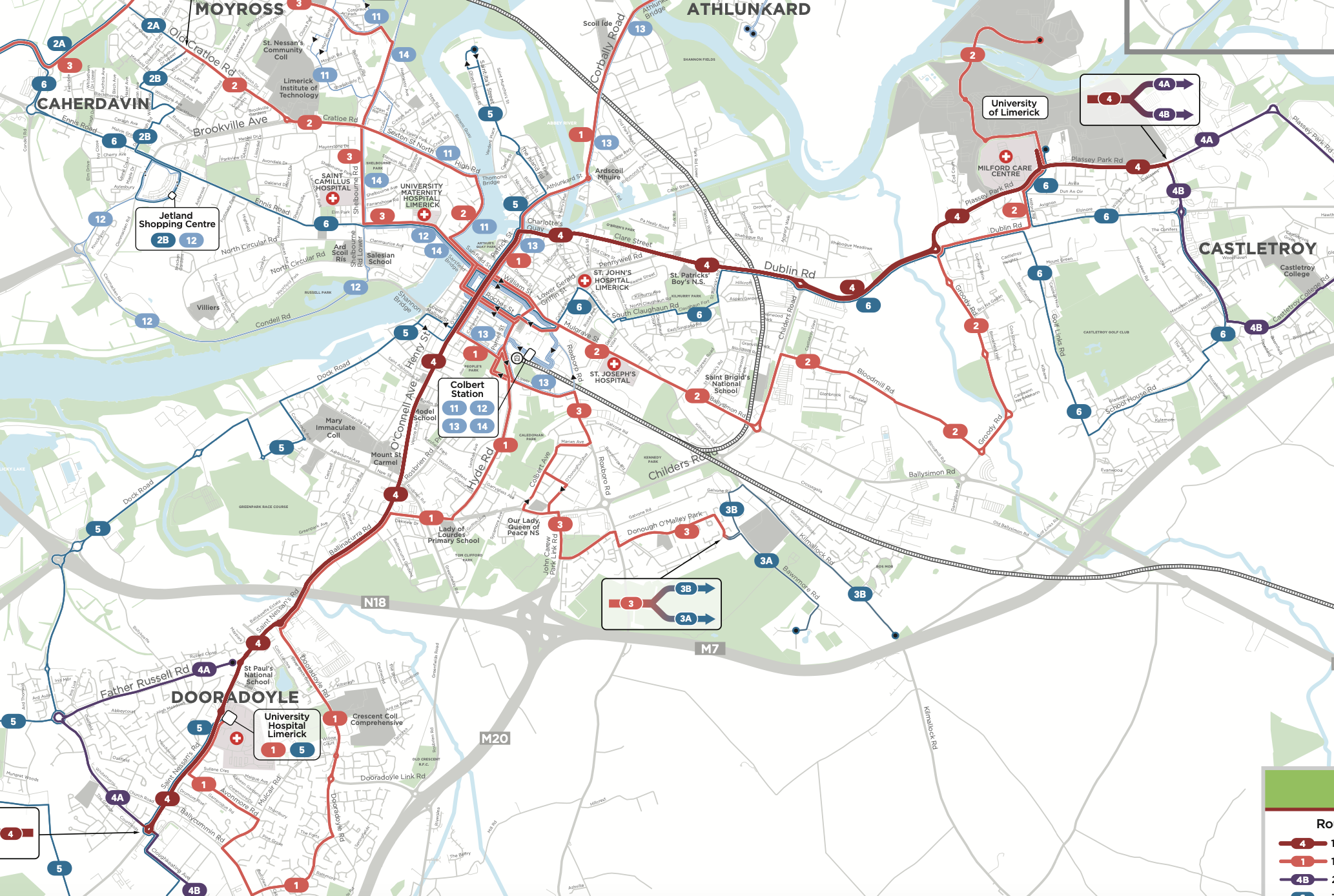
2023 will be a truly groundbreaking year for rural public transport in Ireland. 67 new and upgraded routes being introduced this year, across every county in the country, as part of the Connecting Ireland programme. PDF with details
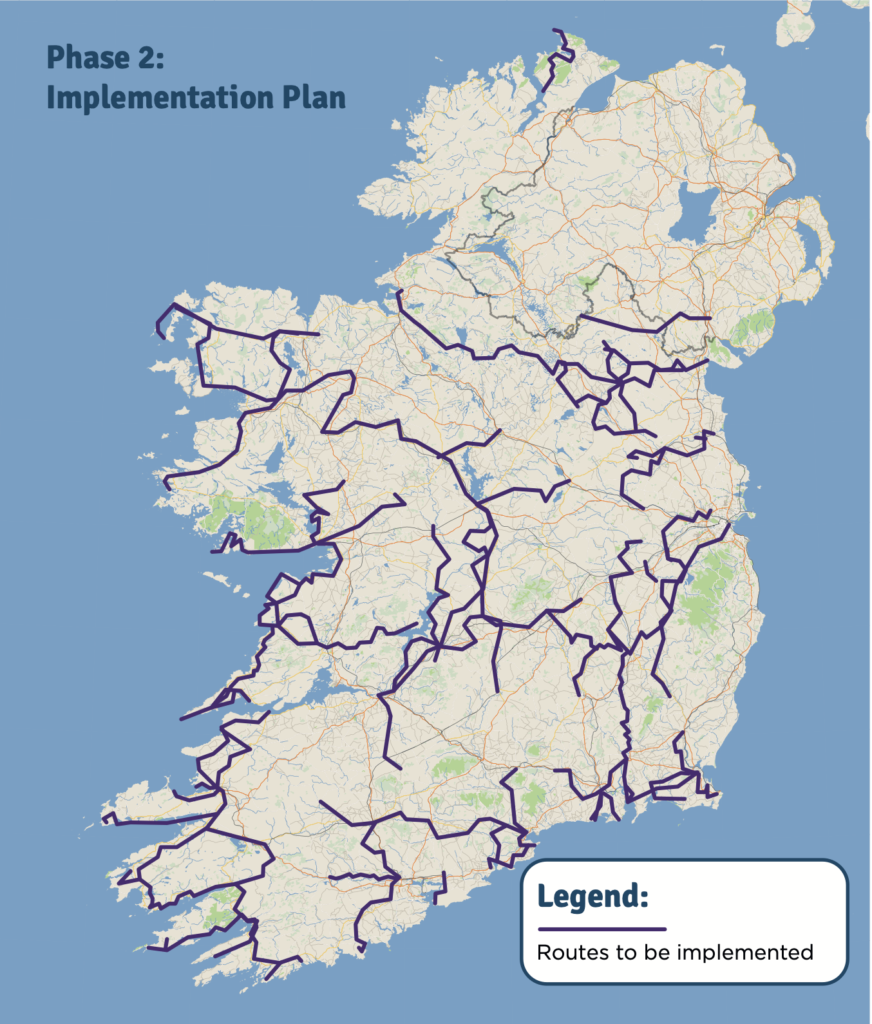
“The Welsh government said all future roads…must not increase carbon emissions, they must not increase the number of cars on the road, they must not lead to higher speeds and higher emissions, and they must not negatively impact the environment.” All major road building projects in Wales are scrapped – BBC News
The recommendations from “The Future of Road Investment in Wales: Advice from the Independent Panel appointed by the Welsh Government”:
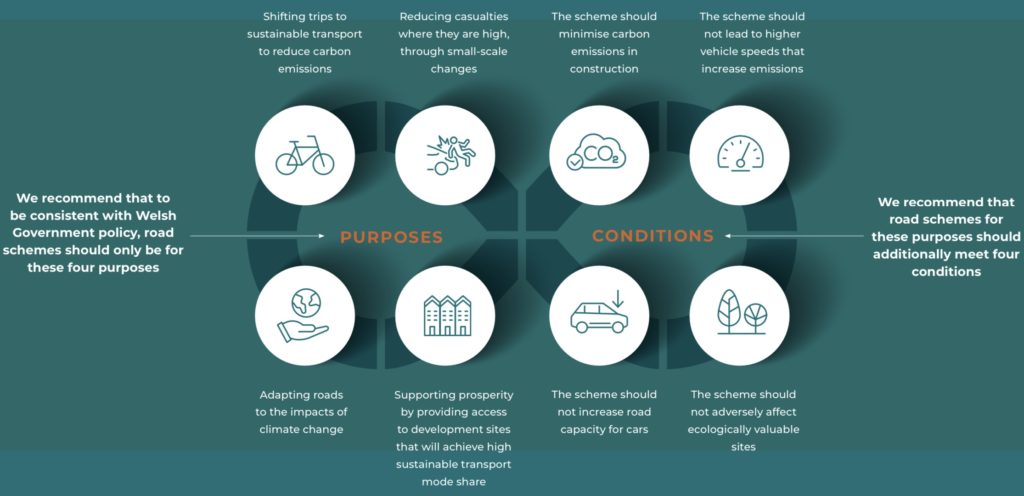
I am confident that if we applied the same (prudent, sensible and expert) analysis and recommendations from Wales to Ireland’s road building programme, all the roads projects in the National Development Plan as currently proposed would be cancelled.
21% of households in Tullamore don’t own a car. This month, Offaly Council gave planning permission for a private hospital on the outskirts of Tullamore. It will be 28 mins walk from the nearest bus stop. This is the road pedestrians and bus users will use to access the hospital.
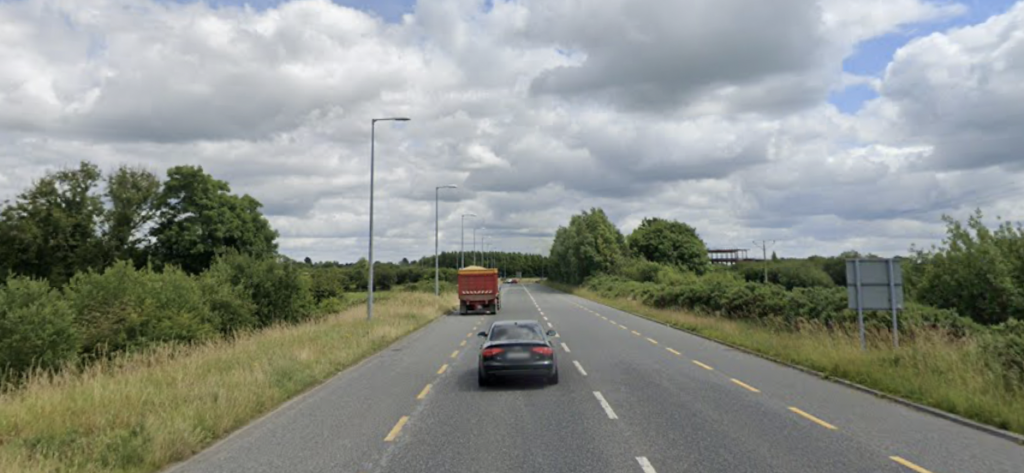
New Connecting Ireland bus service connecting the Irish National Heritage Park, Wilton Castle and the villages of Glynn, Killurin, Ballyhogue, Bree and Tomnalosset to Enniscorthy and Wexford Town. Local Link 384 will run 5 times/day each way Mon-Sat and 4 on Sun, starting this Monday.

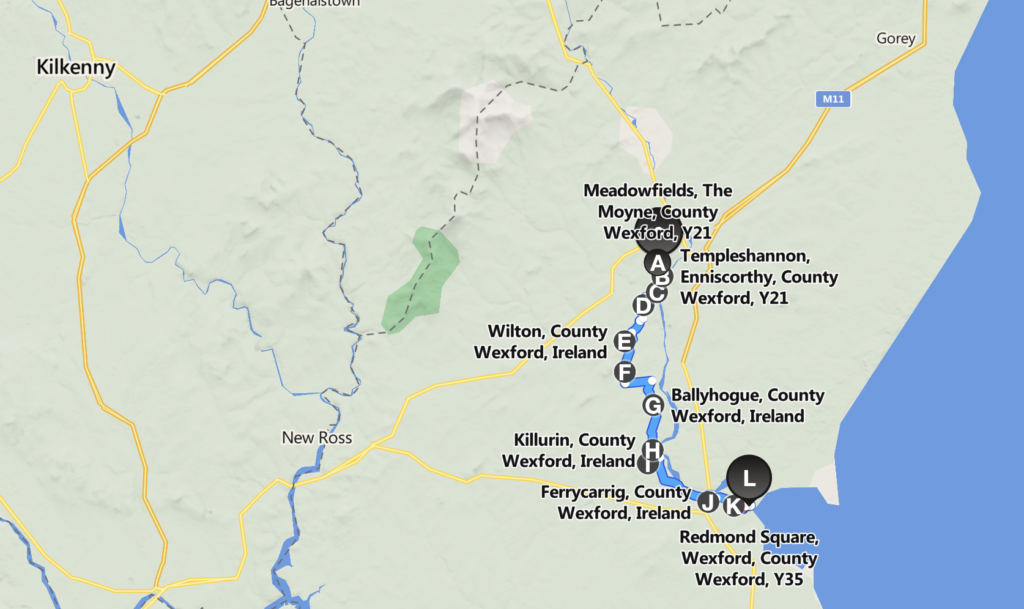
Some thoughts on cultural assumptions and rural transport policy:
I wrote this piece nearly four years ago, in memory of Natalia Jimenez Martinez who was killed on her bike, highlighting the need for an east-west spine for safe cycling in Limerick. Councillors will vote on the first half of this spine this month. If you live in Limerick please drop your local reps a line and ask them to vote yes. Having got so far it would be unconscionable for it to be blocked.
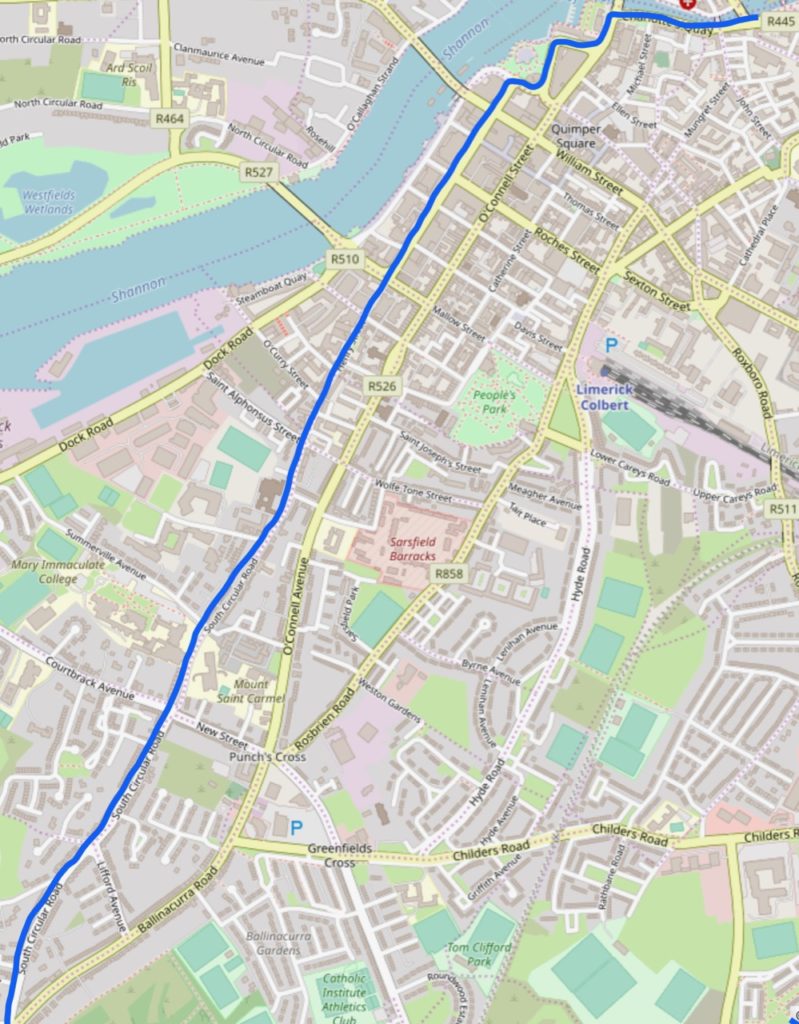
This is a nice detail from the proposed permanent cycle scheme from Clonskeagh through Ranelagh. Continuous footpath and cycle track across a side street with no dip for cars and a stop sign before the footpath. Cars have a 45° slope at the kerb between the footpath and cycle track and between the cycle track and the road (60mm height each). We should do this everywhere, much easier for wheelchair users, people pushing buggies, and kids on bikes in particular, as there’s no need to negotiate constant dips in the footpath and cycle track.

One of the great things about living in a rural market town is the opportunity to support local food producers. This omelette was cooked fresh at a stall in Nenagh by Corrigeen Farm with eggs from their hens fed cereals grown on their farm. It was incredibly tasty.

The exciting potential of car-free places. Merwede, a planned car free neighbourhood for 10,000 residents beside Utrecht railway station. 240 housing units/hectare. 30% social, 25% affordable, 45% private. The only parking will be in an underground garage at the edge: €200/month (discounted for residents with disabilities).
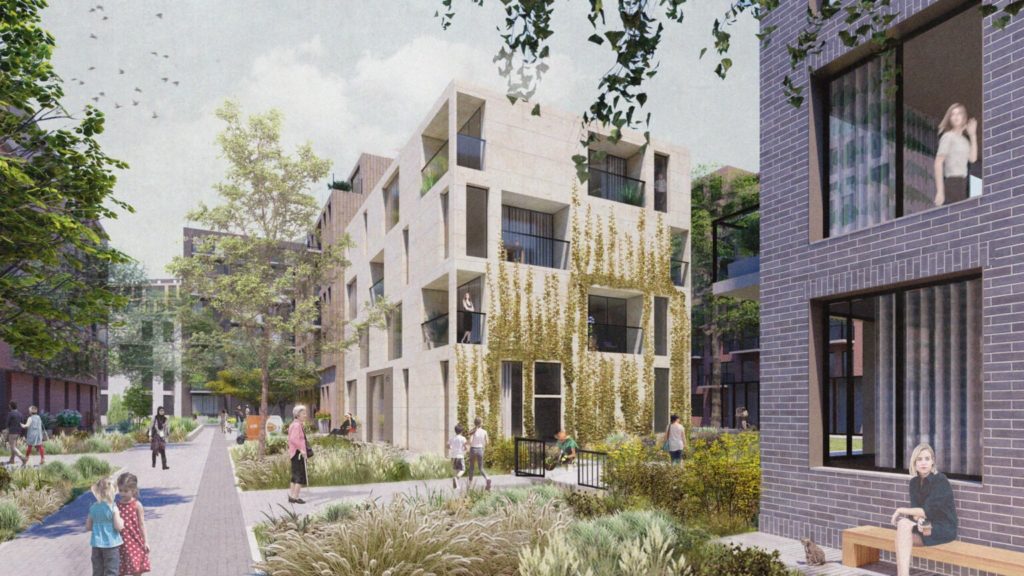
Do you know anyone who would like to work in tech? The company I work for is recruiting a software tester. No experience necessarily needed but we’re looking for someone very methodical, who can catch niggly details and who has an interest in tech and apps. Fully remote with occasional meetings in Limerick. Feel free to send me a cv or contact me directly (info on my website) if you’d like to know more.
Love to see it! New Local Link 188 Athboy-Navan-Drogheda bus route launching this Monday as part of the Connecting Ireland programme. Eight services a day, including late evening buses from Navan and Drogheda, giving people access to night classes, cinema trips, visits to friends and family, and connections from Dublin and further afield.
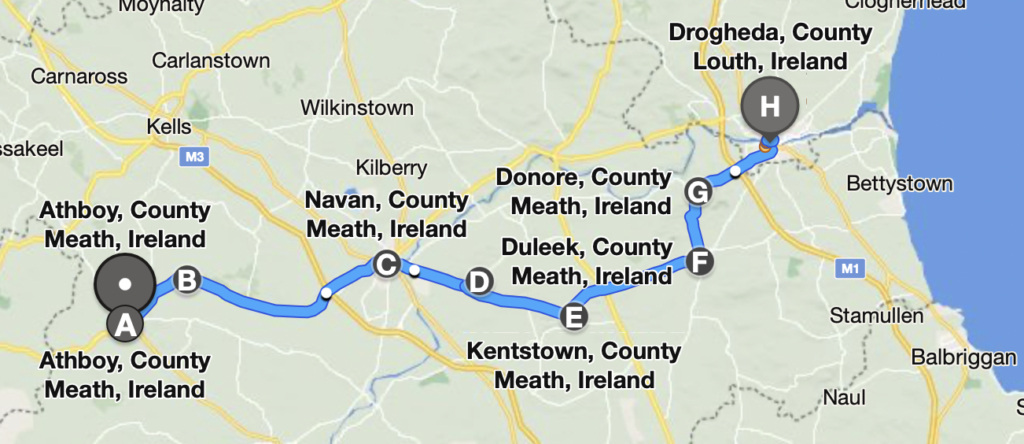
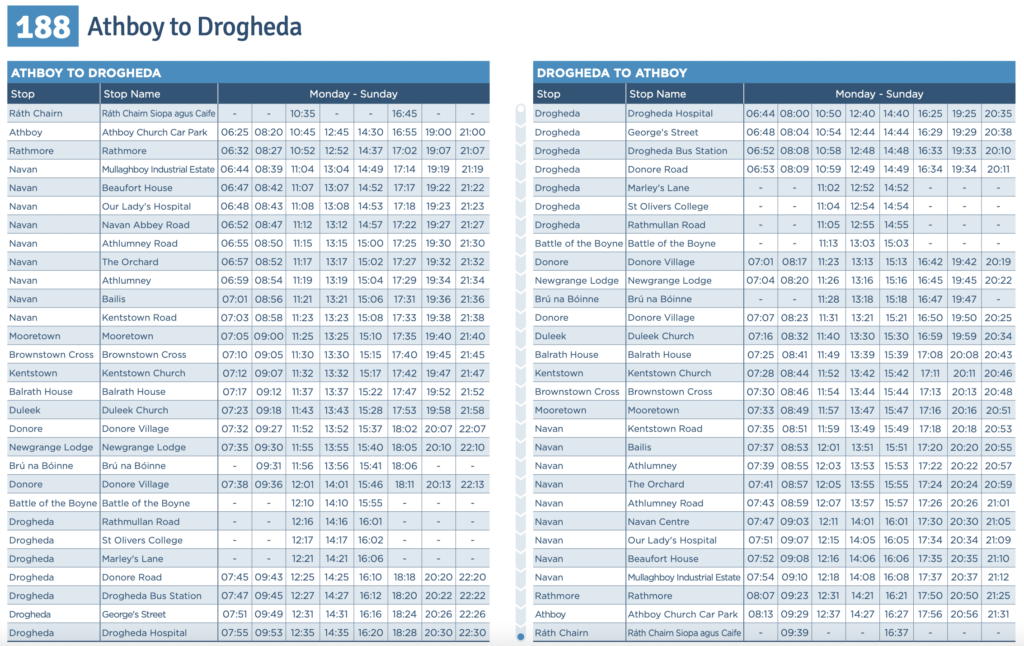
This is an astonishingly good piece by Marco Chitti about how to really make buses work in cities. Making sure bus lanes don’t get obstructed by traffic at junctions and speeding up boarding matters, but wholesale changes in how cars circulate to make space for buses *really* matters.
The Connecting Ireland rural public transport programme is not hanging around in 2023. Tomorrow sees the launch of the new 897 Kilkenny-Carlow-Athy Local Link bus service connecting villages in counties Carlow, Kilkenny and Laois, and offering transfers to rail services in Athy and Kilkenny.
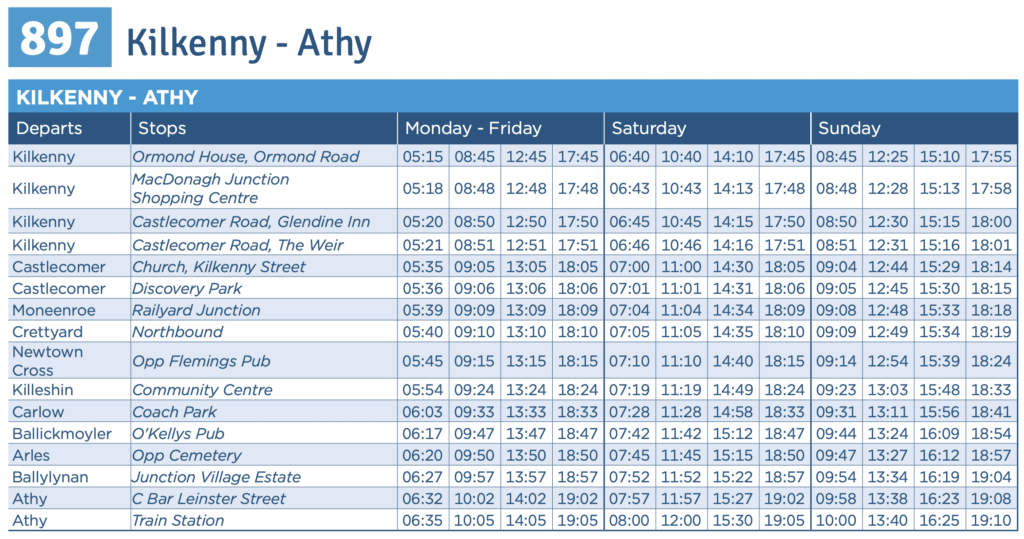
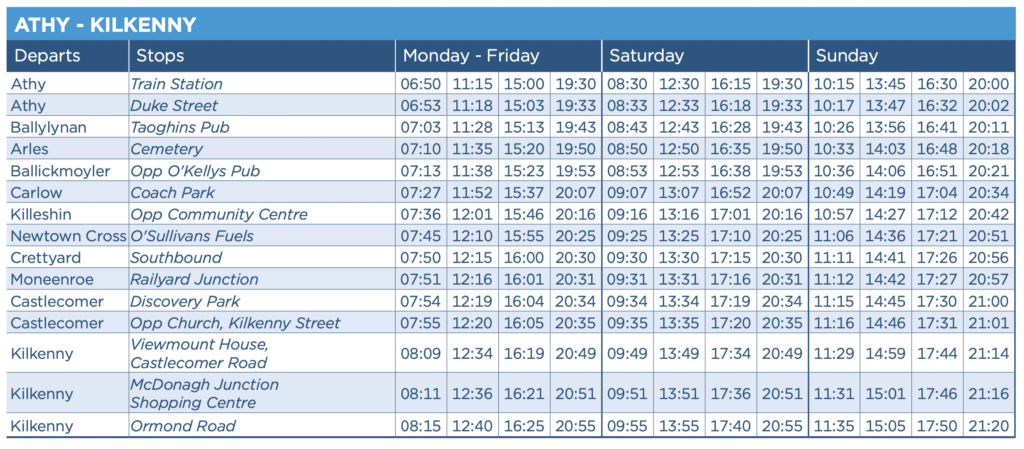
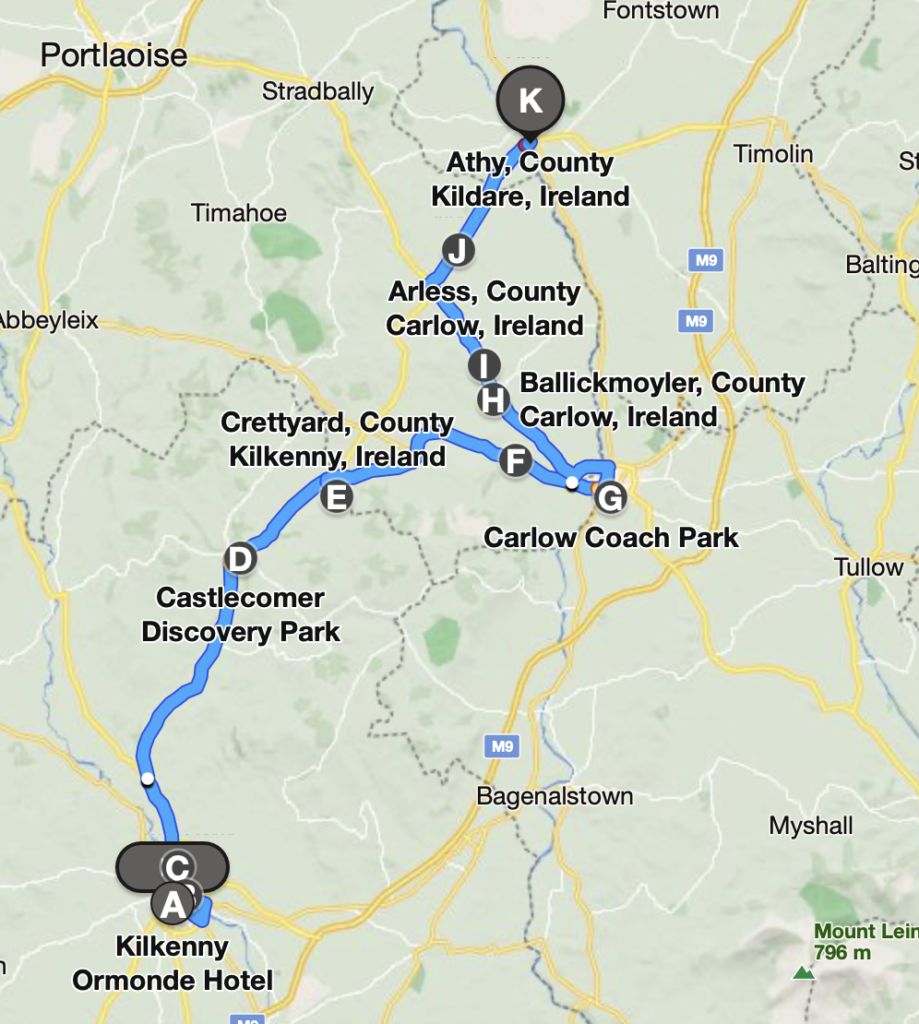
Two years ago a big increase in bus services serving the Limerick communities of Southill and Moyross was announced. Yesterday Bus Éireann noted that passenger numbers are up 40-60% on this route compared to 2019. Great to see.
Population distribution in Ireland, Census 2016 Dublin City and suburbs: 25% Regional cities 9% Towns and villages: 36% Outside cities, towns and villages: 30%.
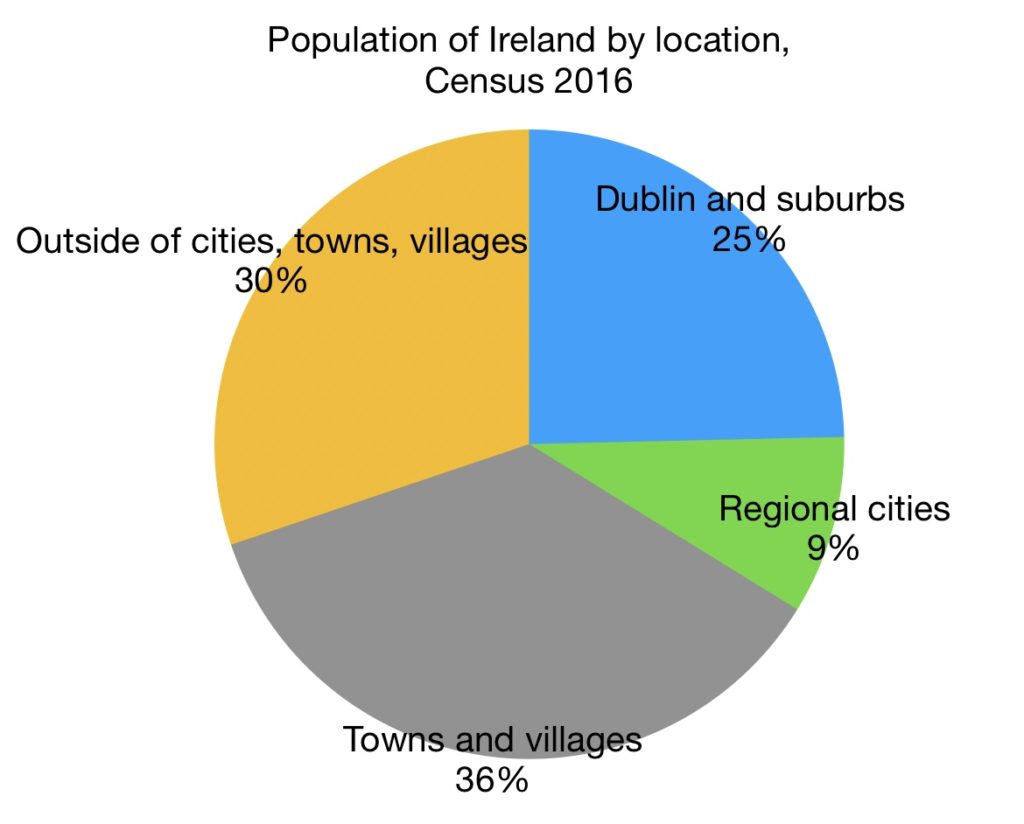
Regional cities are Cork, Limerick, Galway, Waterford. Towns and villages (“census town”) defined by: “being a minimum of 50 occupied dwellings, with a maximum distance between any dwelling…of 100 metres, and where there was evidence of an urban centre (shop, school etc)”
The claim that Park and Ride schemes reduce transport emissions is not well-supported by the evidence. In a study of 8 park and ride schemes in the UK, Parkhurst (2000) found that their main effect was to redistribute, not reduce, private car traffic.
Overall, traffic (and kms driven) increased as a result of each P&R scheme, with any reduction in the city centre offset by an increase in traffic in the outskirts. The study further noted that any decrease in traffic in the centre would be offset by induced demand and economic growth if traffic restrictions were not implemented. https://doi.org/10.1016/S0967-070X(00)00006-8
New proposed cycle facilities connecting a secondary school in Thurles, Co. Tipperary.
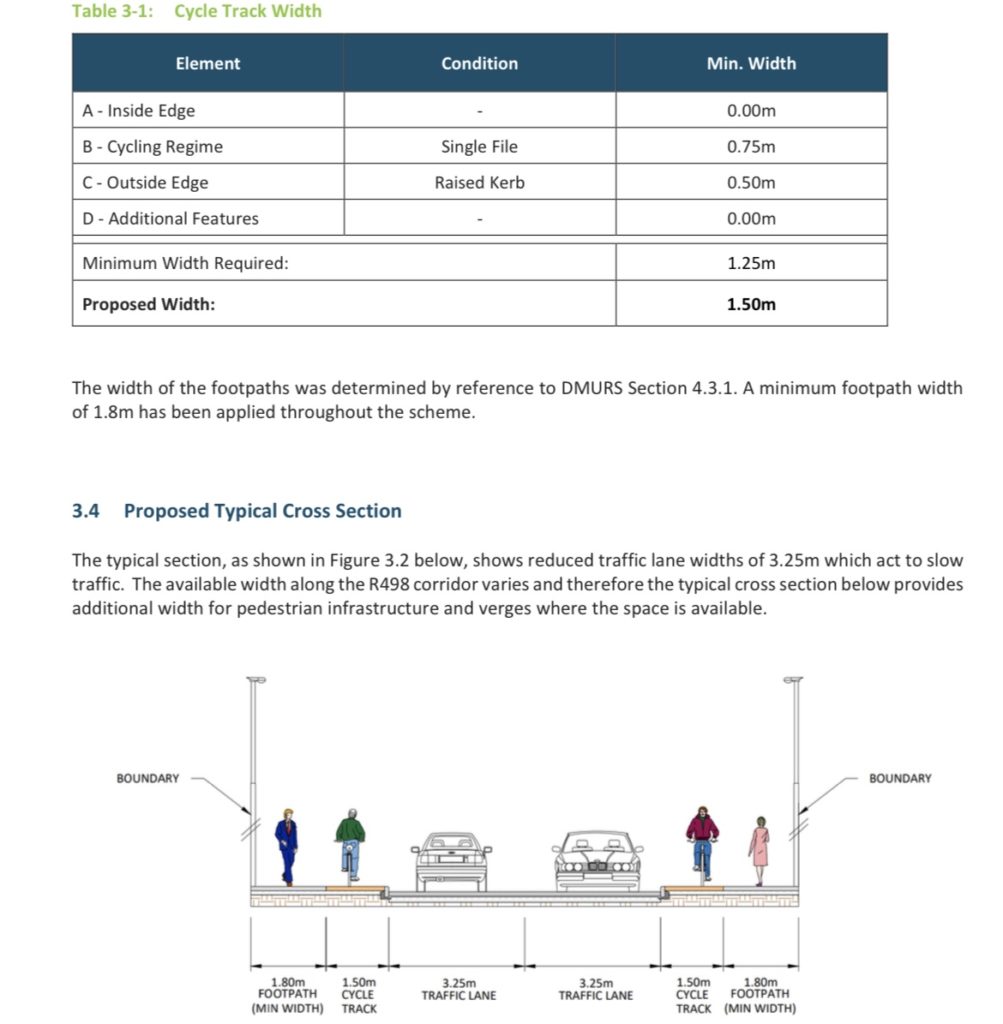
Interesting that the SI enabling the trial of zebra crossings without Belisha beacons says that a sign *may* be used. My interpretation of the instrument is that if the zebra lines on the road exist |=| then it is a valid zebra crossing in law, even without Belishas or a sign.
The regulations now read: “A driver of a vehicle approaching a zebra pedestrian crossing where traffic sign number RPC 001 (zebra pedestrian crossing) or traffic sign number RPC 001A (zebra pedestrian crossing without belisha beacons) is provided shall yield the right of way to any pedestrian who has commenced crossing the road at the crossing.“ Where RPC 001A *shall* include lines on the road and *may* include a sign, detailed in the first link above.
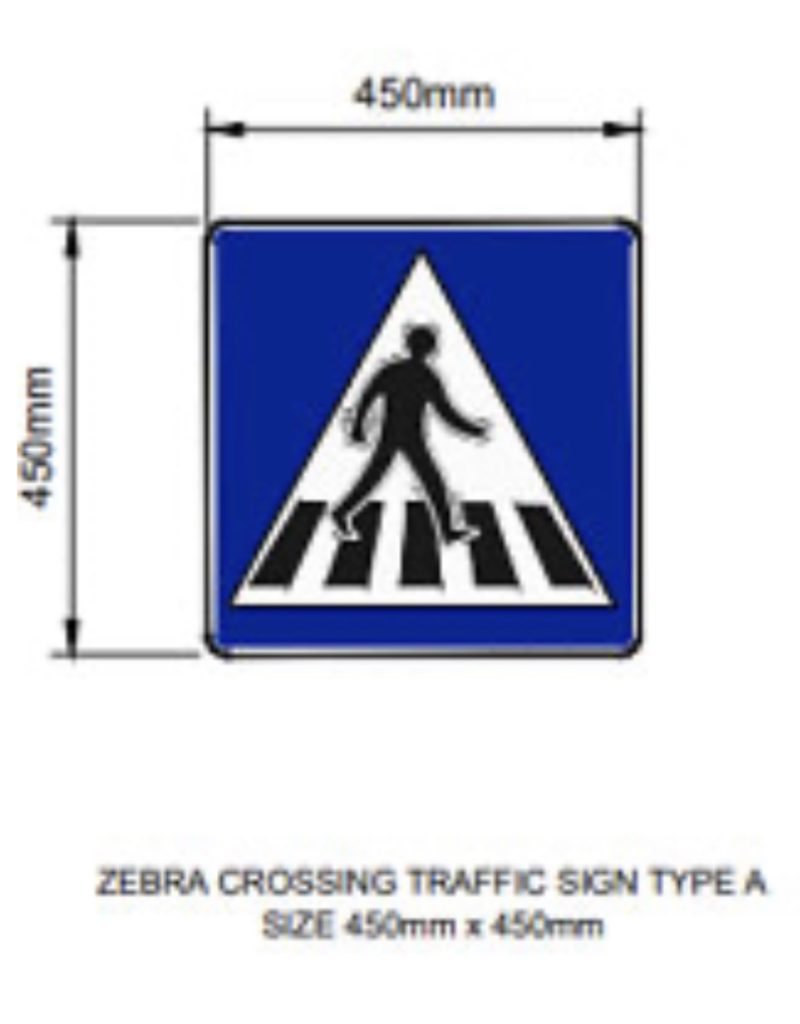
A number of North Cork villages have no daily public transport service – that’s going to change from this Monday. New Local Link rural bus service 522 for North Cork, connecting Newtownshandrum, Dromina, Freemount, Liscarroll and Churchtown with Charleville, Buttevant and Mallow train station with connections to rail services. 4 services/day Mon-Sat, and 3 on Sun.
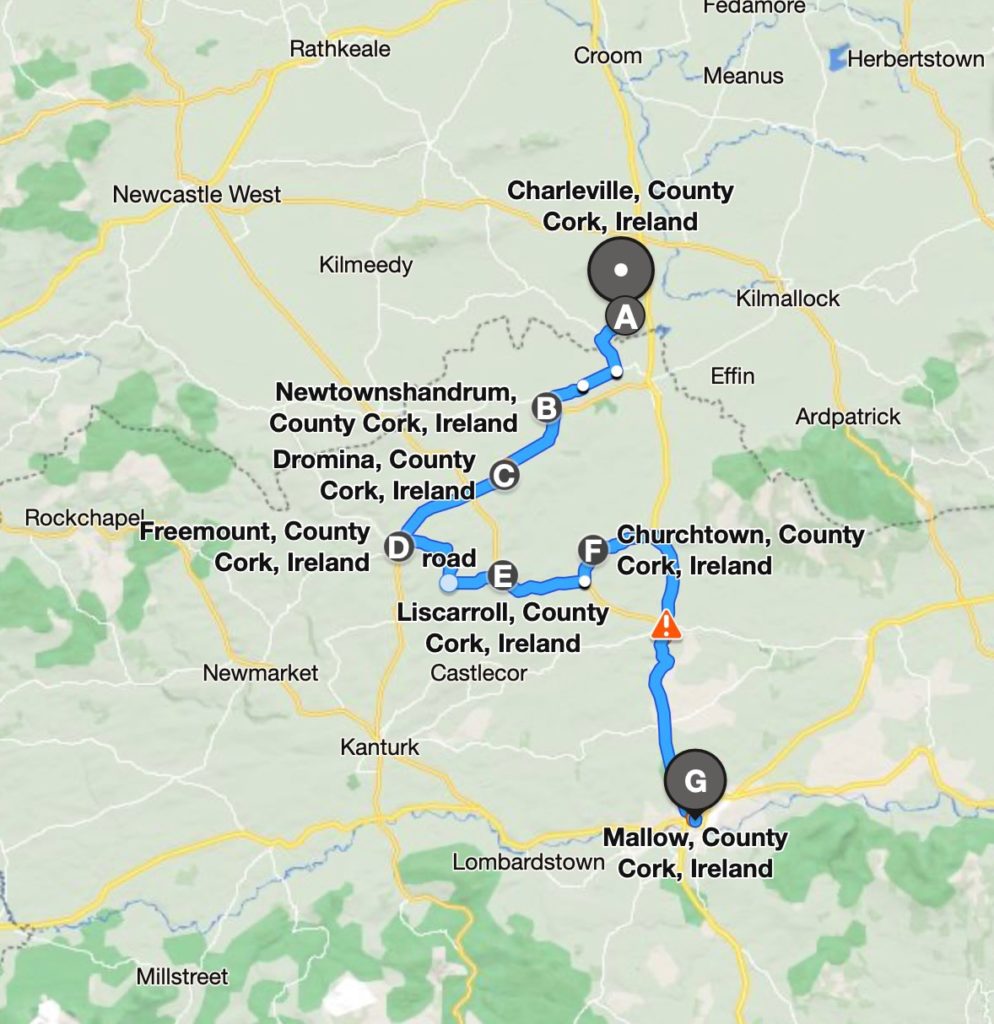
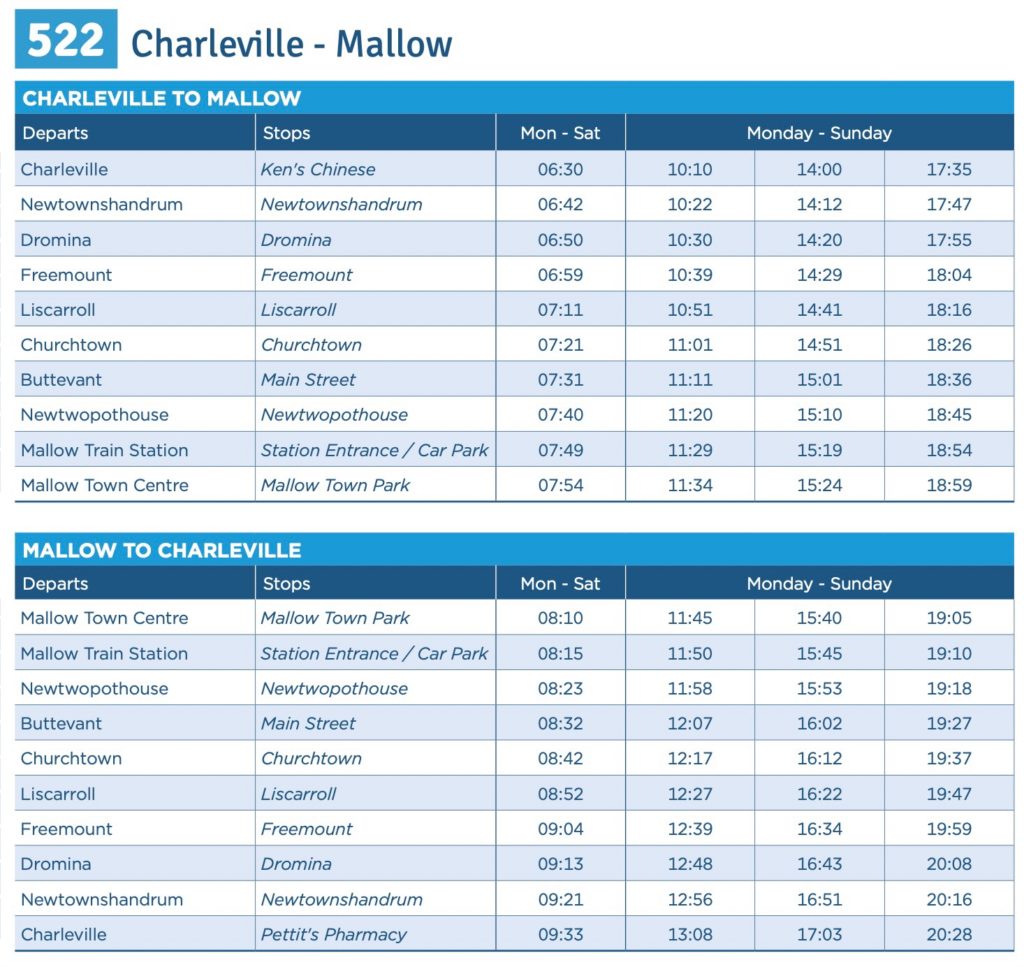
New enhanced service on Local Link Kerry route 283, going from 12 services/week to 24/week, serving Currow – Currans – Kerry Airport – Farranfore – Firies – Ballyfinnane – Farmers Bridge and Tralee, starting this Monday. Timetable here.
A third new Connecting Ireland Local Link rural bus route announced today. The M3 will connect Monaghan’s North Eastern hinterland with Monaghan Town 5 services/day Mon-Sat and 4 on Sun. And the other MN services M1 and M2 will also switch to 7 day running. Great to see!
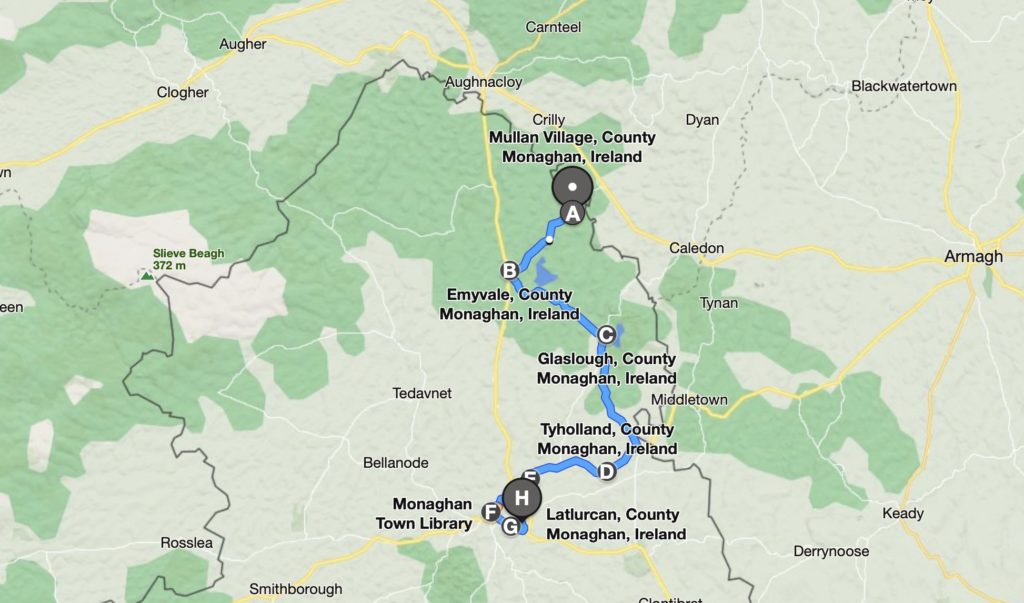
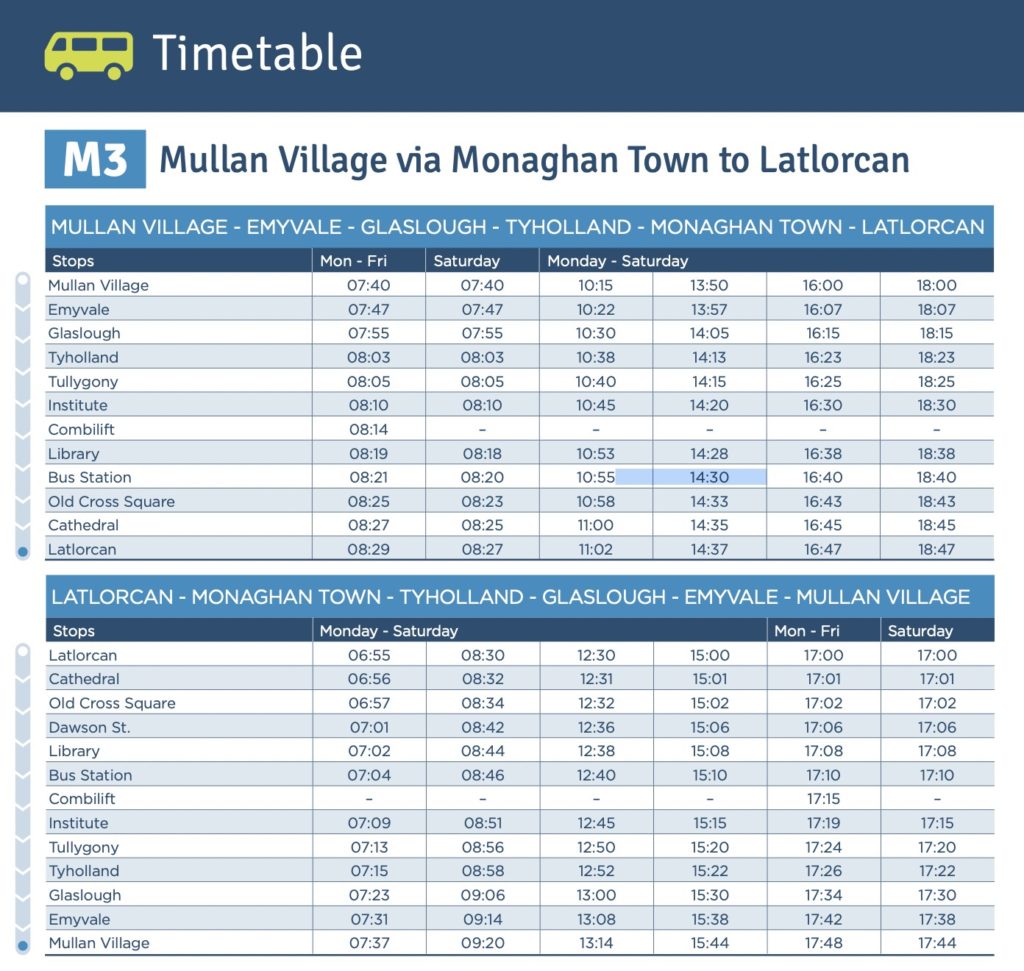
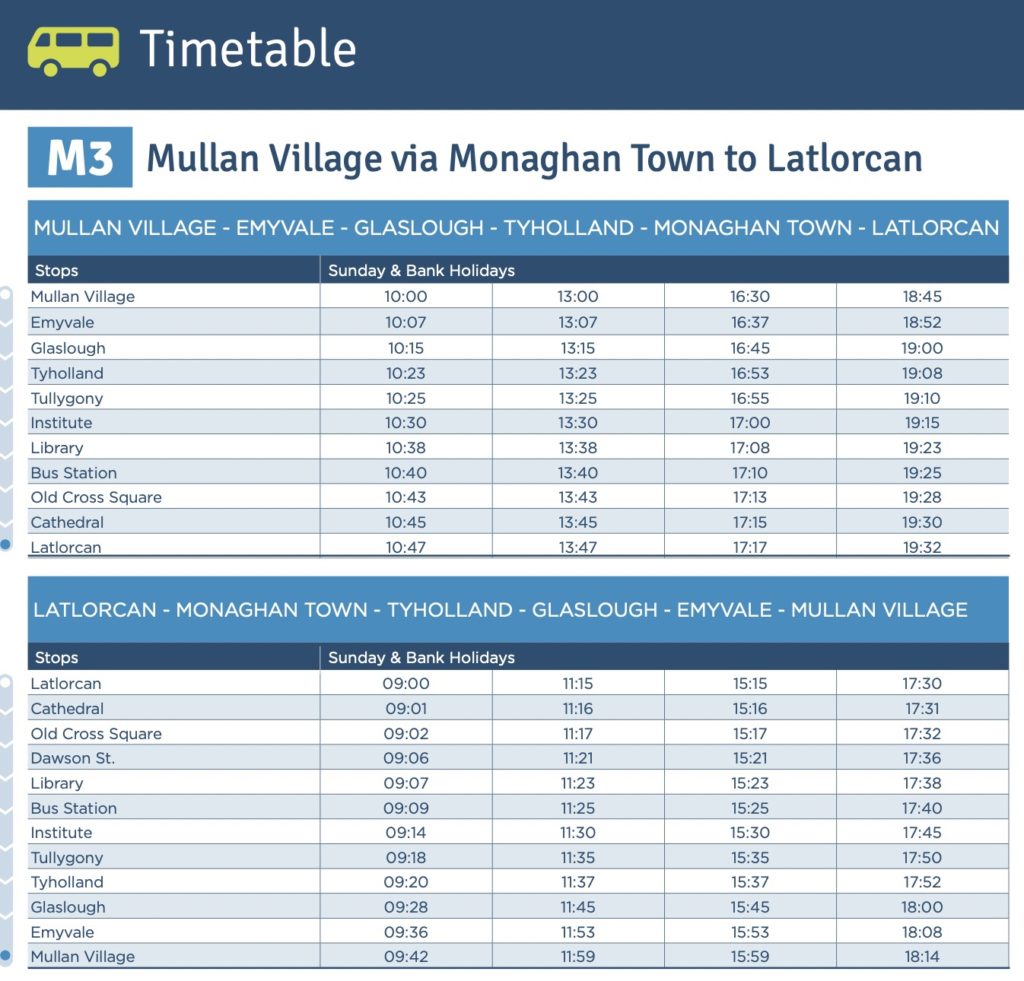
Another hour, another Connecting Ireland announcement! New Local Link bus service for Co. Cork, connecting Mallow train station to Mitchelstown via Doneraile and Kildorrery. 4 services/day Mon-Sat, 3 on Sun. Starts on Monday.
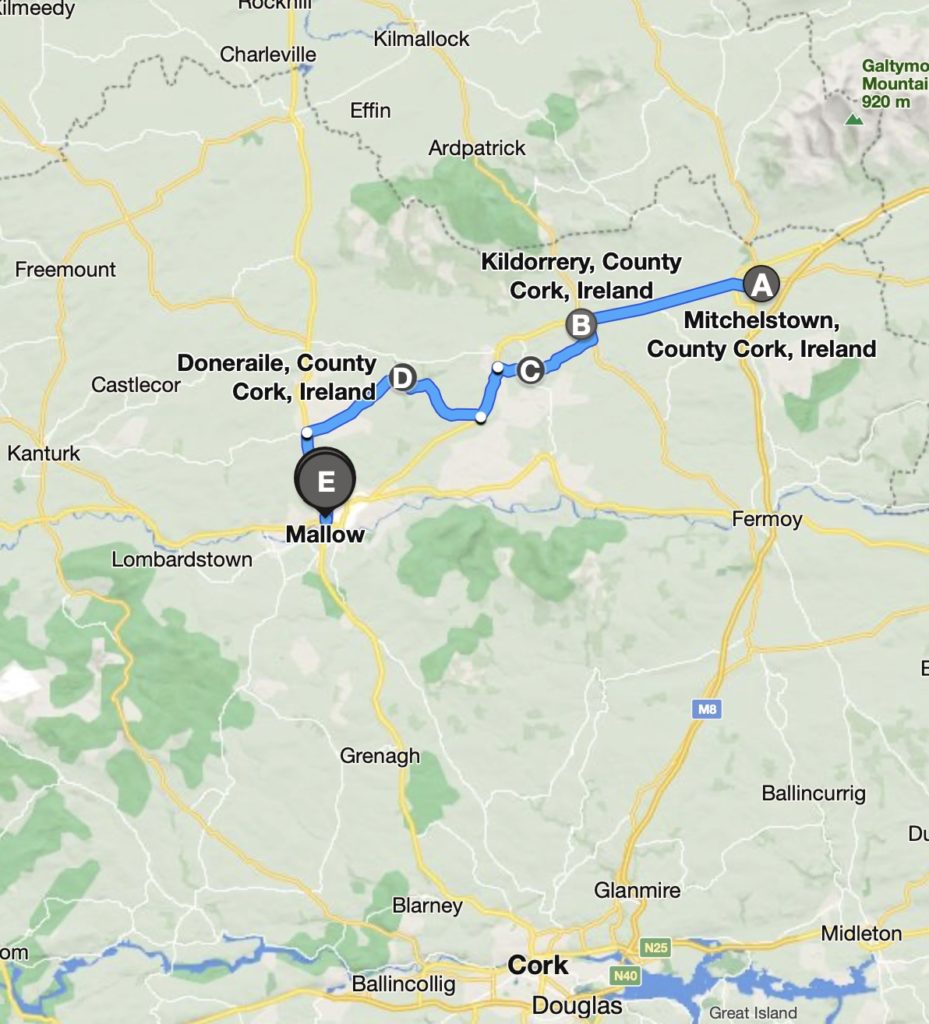
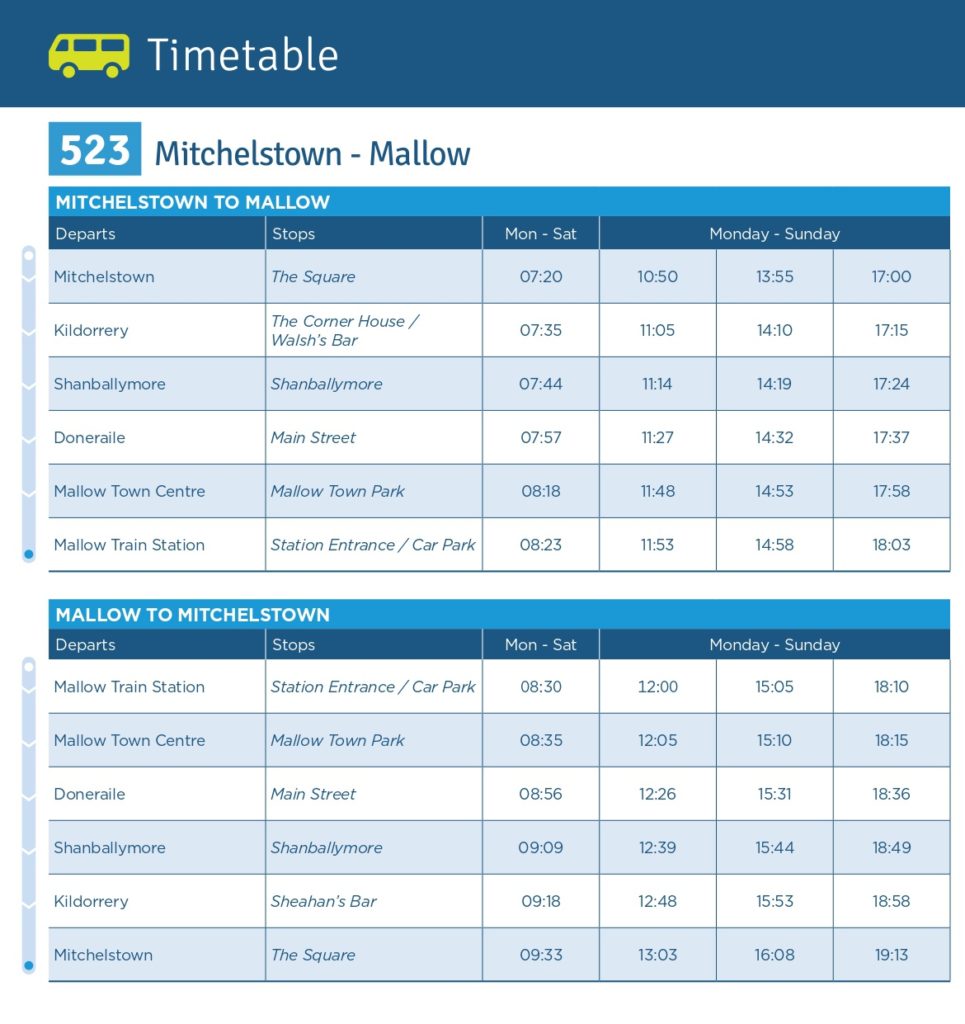
Another week, another new Connecting Ireland rural bus route. The 546 Local Link will connect Castlerea to Ballinasloe and return, via Glenamaddy, Mountbellew and Ahascragh, w/ connections to Westport, Sligo, Galway, Dublin and Athlone. 3 buses/day Mon-Sun. Starting next Monday. Timetables up soon on the Local Link Galway website.

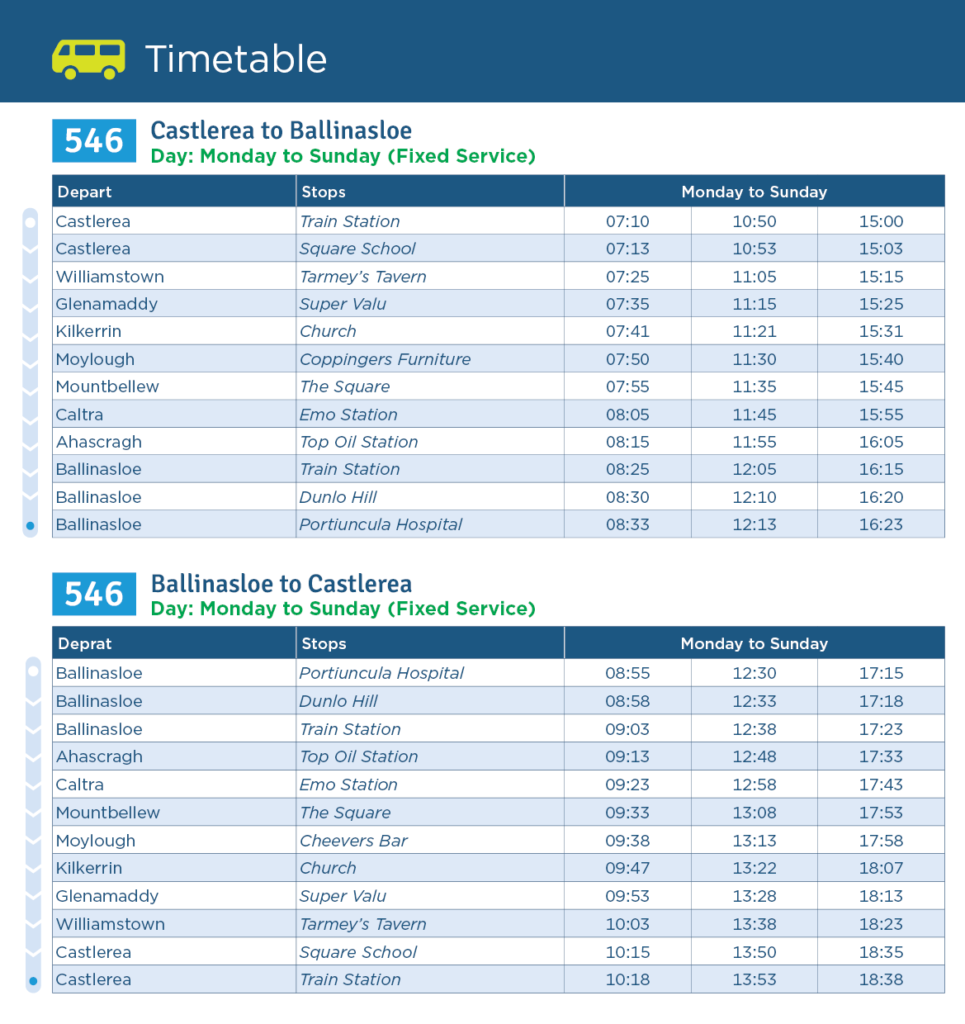
I wrote an article on my experience doing an MSc in Sustainable Transport and Mobility at TU Dublin. In short I think it’s one of the most satisfying things I’ve ever done. Next intake starts January 2022 and it’s not too late to apply.
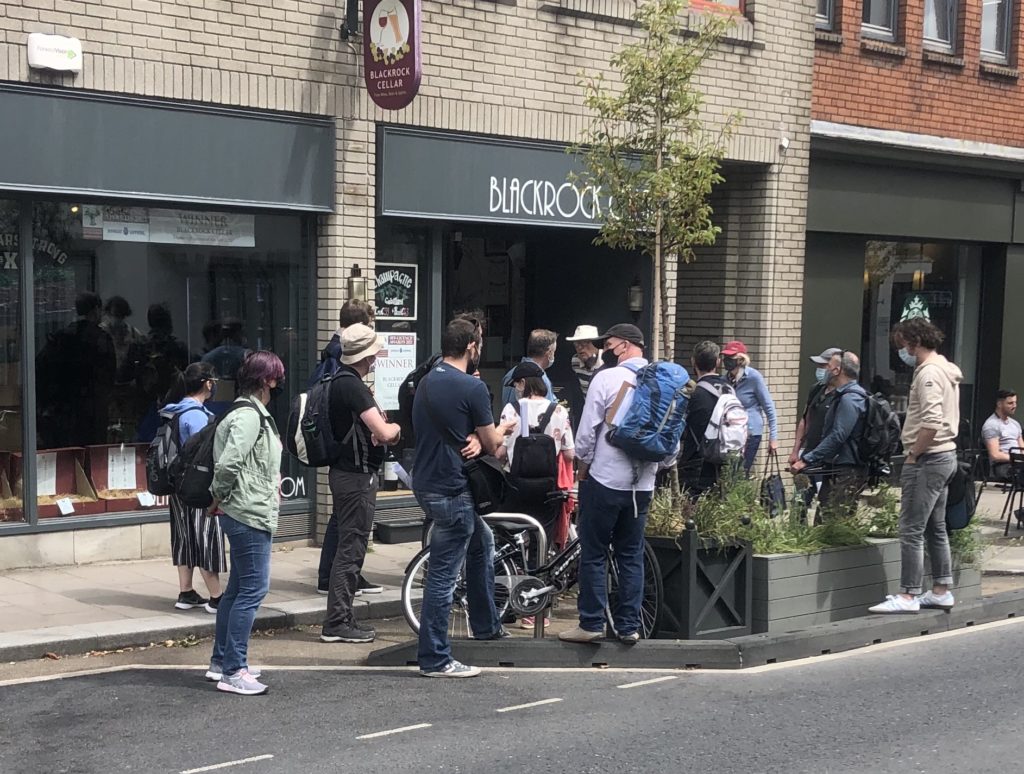
I have been fooling around a bit on Mastodon and am experimenting with mirroring my microblog on there, manually for now as I can’t get the alt text on images to repost.
Could this be the most scenic bus route in Ireland? New Local Link service connecting Wicklow and Kildare announced today under the Connecting Ireland programme: 4 services/day, 7 days a week, linking Arklow, Wicklow and Sallins train stations, via Glendalough and Blessington.

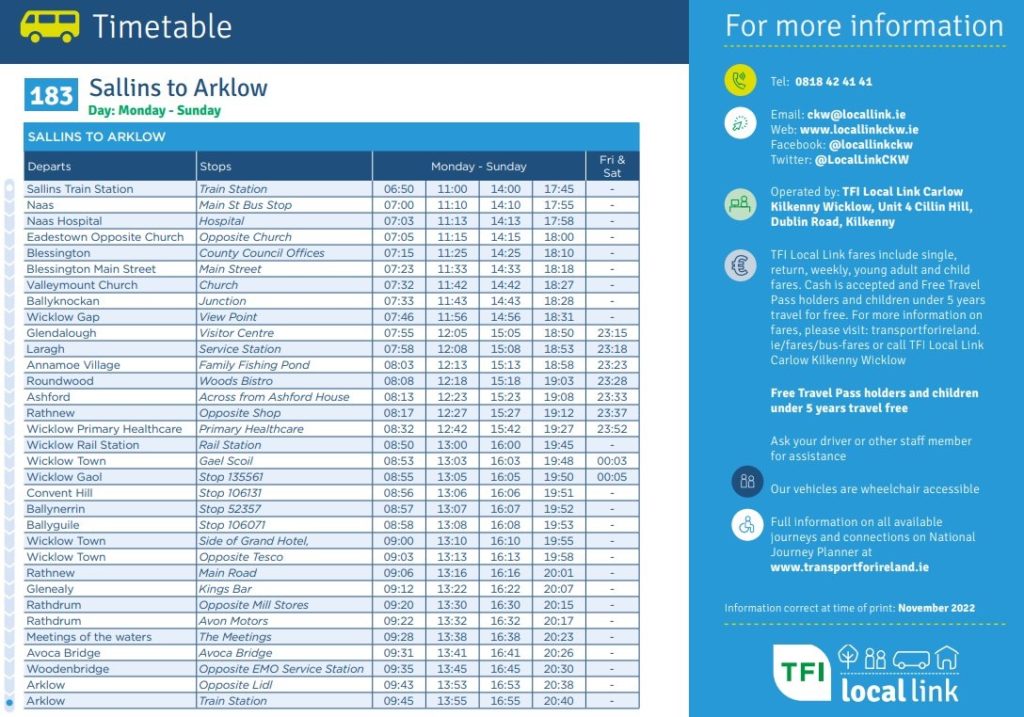
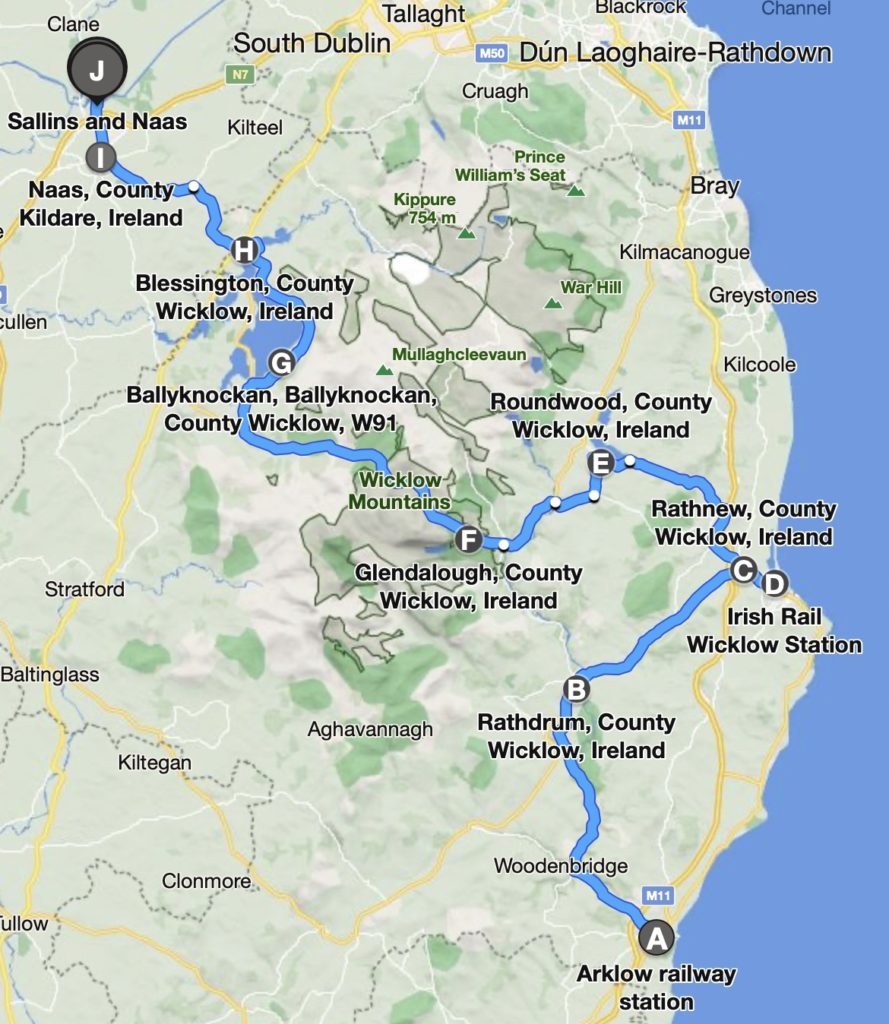
View from the 323 Limerick-Nenagh bus this morning as it winds its way north along the eastern shore of Lough Derg.

Aldi have some editions of Dobble on special offer today for a tenner. It’s a great matching game that gives younger kids a chance to beat their older siblings. There is some interesting maths behind the game mechanics too. Just don’t get to cross when the kids start to routinely beat you.

The morning train from Nenagh arrives in Birdhill this morning on its way to Limerick. This line reopened yesterday after almost 2 months closure as the final replacement of old jointed track with Continuous Welded Rail was completed.
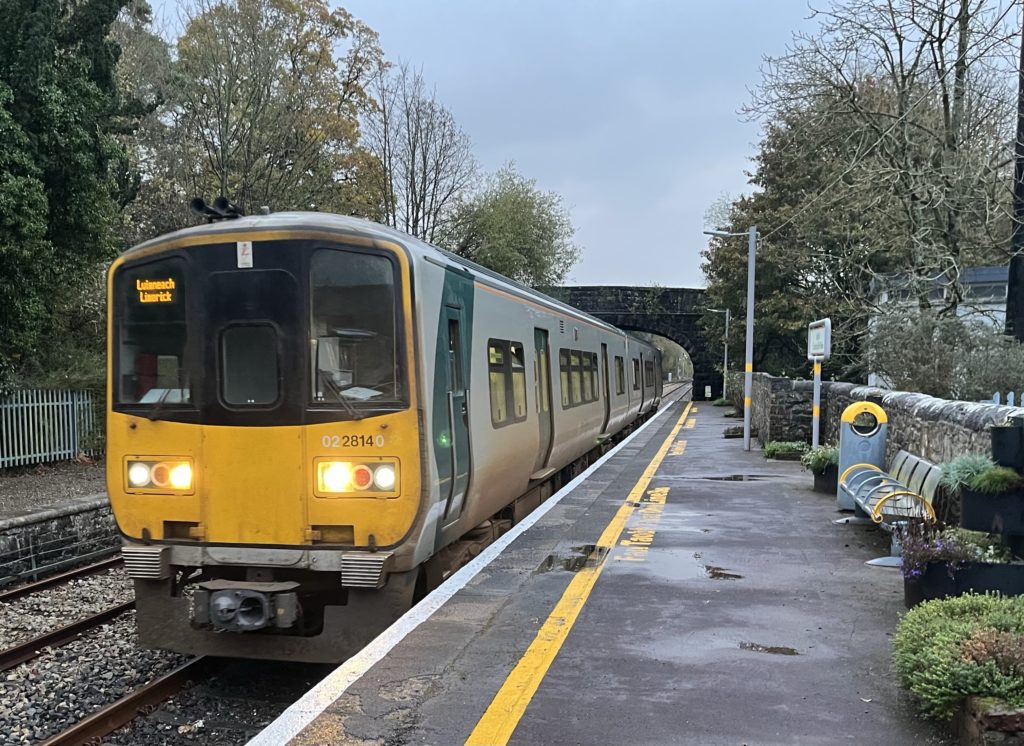
Are you a behavioural scientist? Would you like to have a real impact transforming how people travel in Ireland’s 3rd city? Limerick Council is recruiting a behavioural scientist for its Active Travel team. Deadline 12th Dec 2022. https://www.limerick.ie/council/services/your-council/jobs/behavioural-scientist-grade-vii-5-yr-ftc-closing-date-12th-0
Rural public transport is getting better thanks to the Connecting Ireland programme. This is a map of new+improved routes introduced Apr-Oct 2022. More services added this month and even more to come before the end of the year.
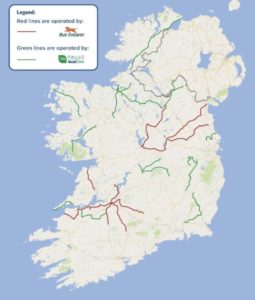
If there are changes proposed to roads near you, and you think the changes could be better, it’s always worth making a submission. Sometimes it feels like you’re shouting in the wind, but when your suggestions are taken on board it can be very satisfying.
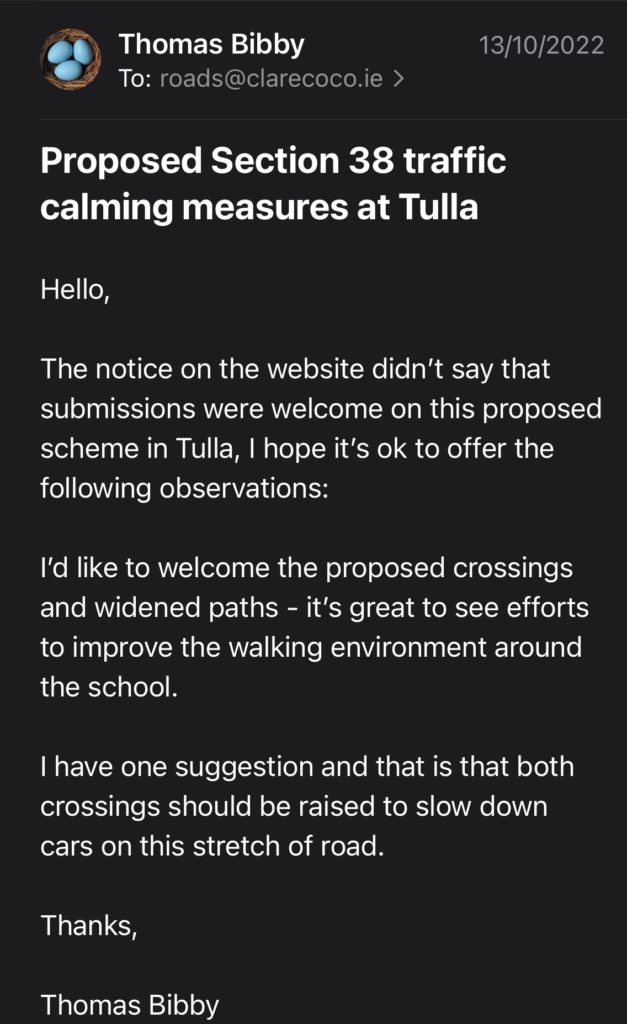
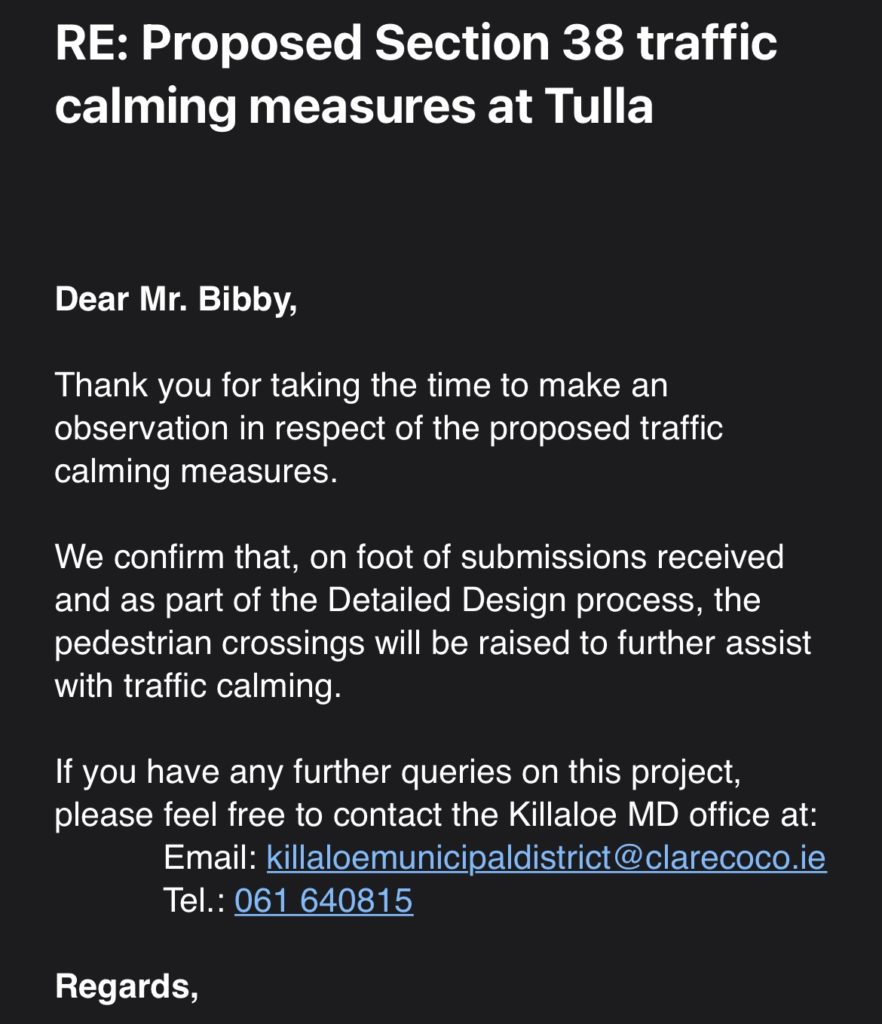
Annual cost of a residents on street parking permit in Irish cities:
Dublin: €50
Cork: €30
Limerick: €6.35
Galway: €30
Waterford: €15
Posted from my microblog https://t.bibby.ie crossposted to Mastodon: https://mastodon.ie/@thomasbibby Twitter: https://twitter.com/thomasbibby and Micro.blog http://micro.blog/thomasbibby Hope the alt text works!

Interesting new research from Trinity: over half of Irish office workers feel they are more productive working from home. Lots of fascinating insights in this open access paper.

The Minister for Transport signed a Statutory Instrument last month bringing the rest of the country into the laws governing public transport fares in Dublin, which includes the potential to bring non-PSO routes under the NTA’s fare scheme.
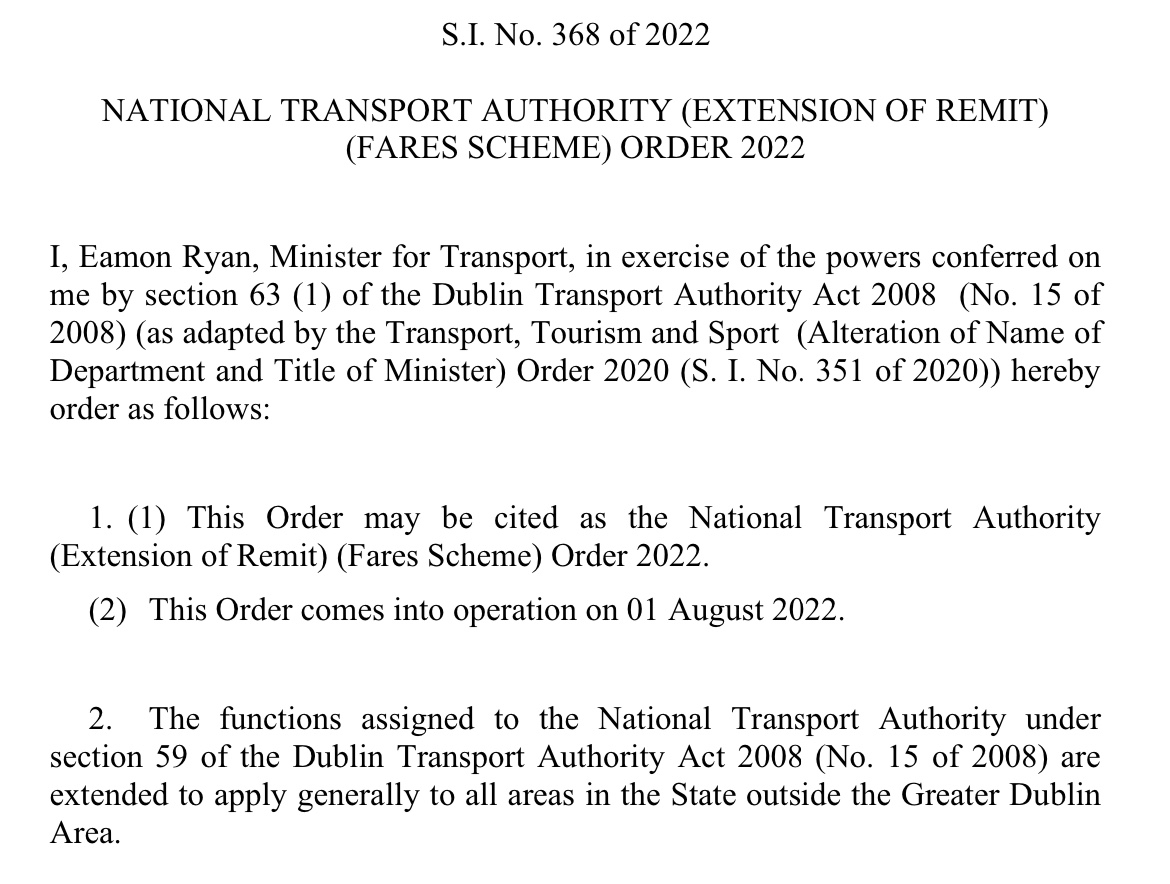
A bit of a nerdy post this, but I attempted to piece together what Ireland’s 2025 sectoral emissions targets will be and what the total sectoral emissions ceilings for the first and second carbon budget periods will be. Link.
The amount Irish households owe on their car finance increased significantly in the 2010s. By Feb 2020 households owed €3.98 billion, a 156% increase in 5 years. Data from the Central bank, excludes credit unions.
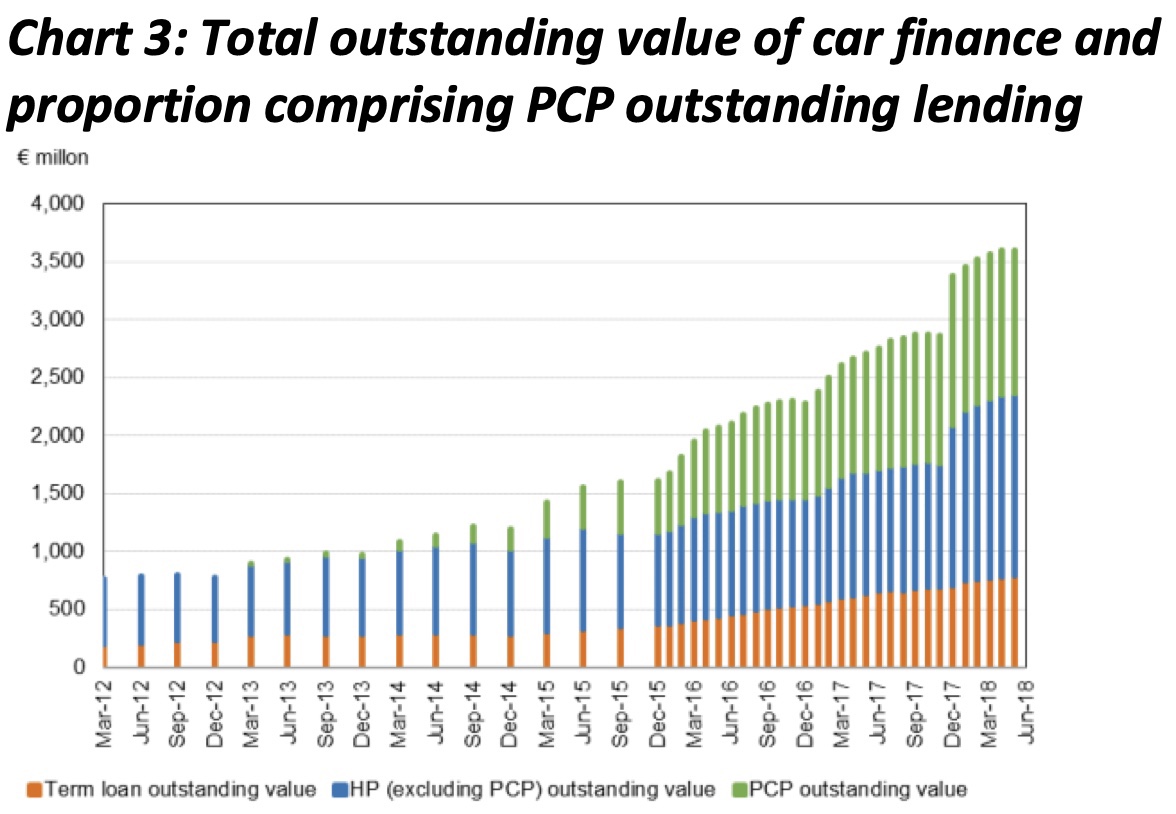
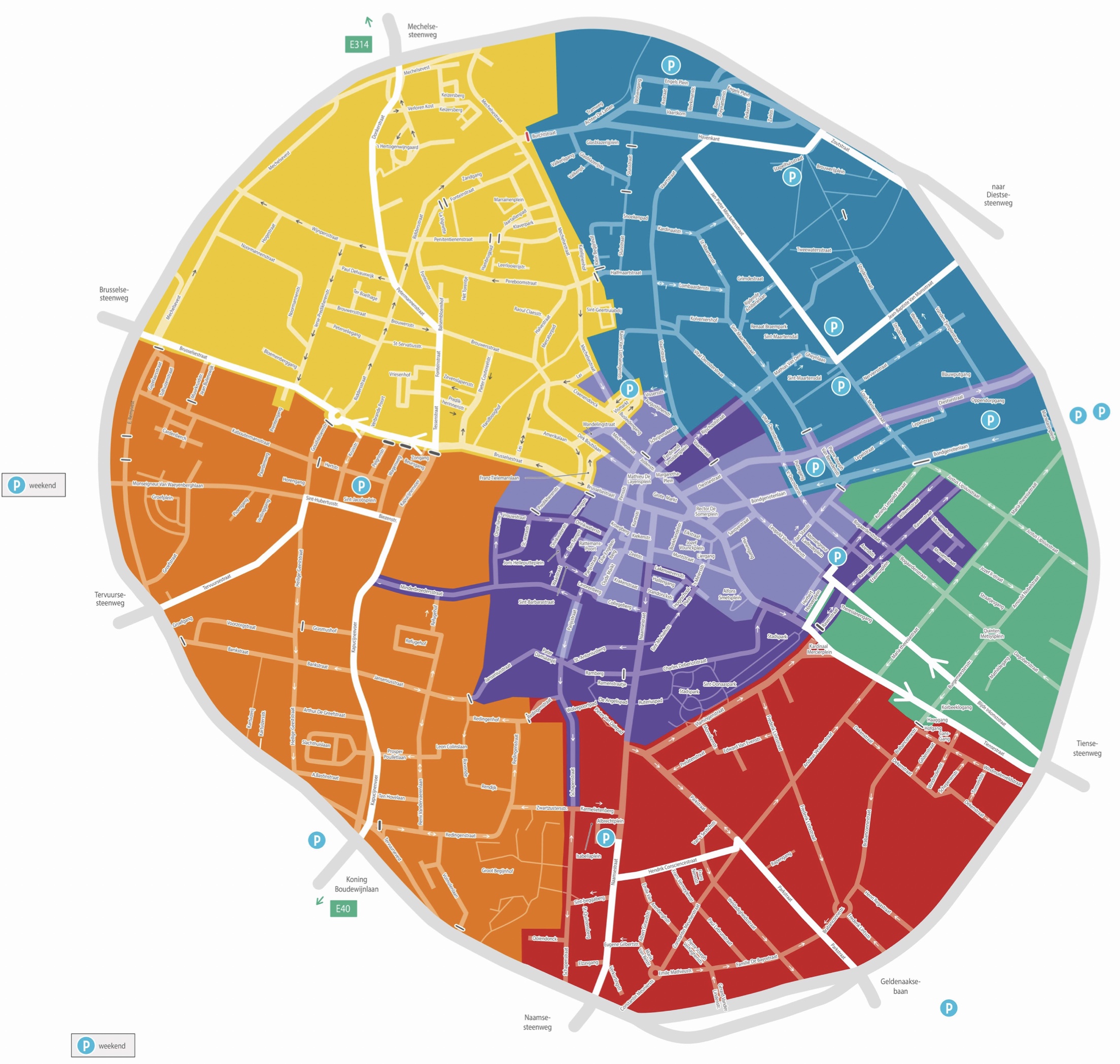
Circulation plan for Leuven, Belgium (pop. ~100k). Cars can’t drive directly between the coloured zones. Purple zones are car free, with some exceptions for deliveries, residents and people with disabilities. One year after introduction, cycling was up 32%.

There is an electoral division in the centre of Limerick City with the fifth highest percentage population decline in the country 2016-2022 at just under 20%.
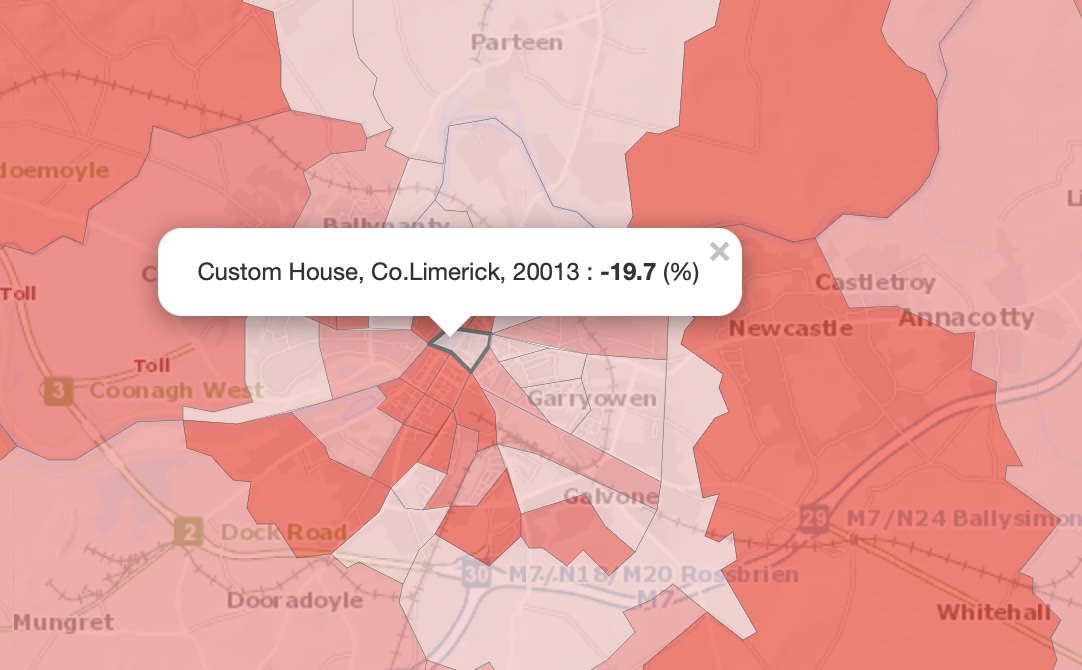
These new buses are fabulous. Good wheelchair accessibility too.
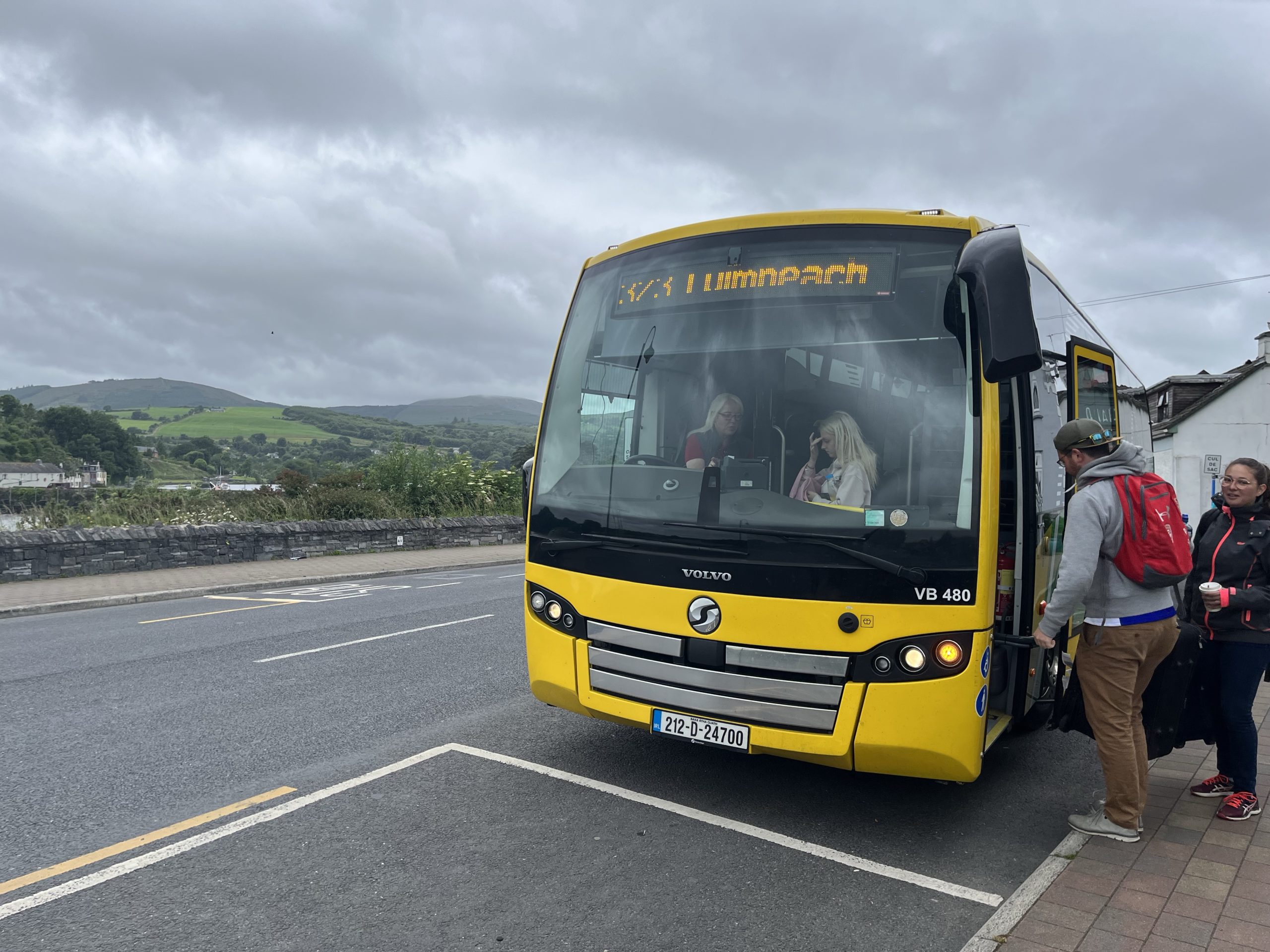
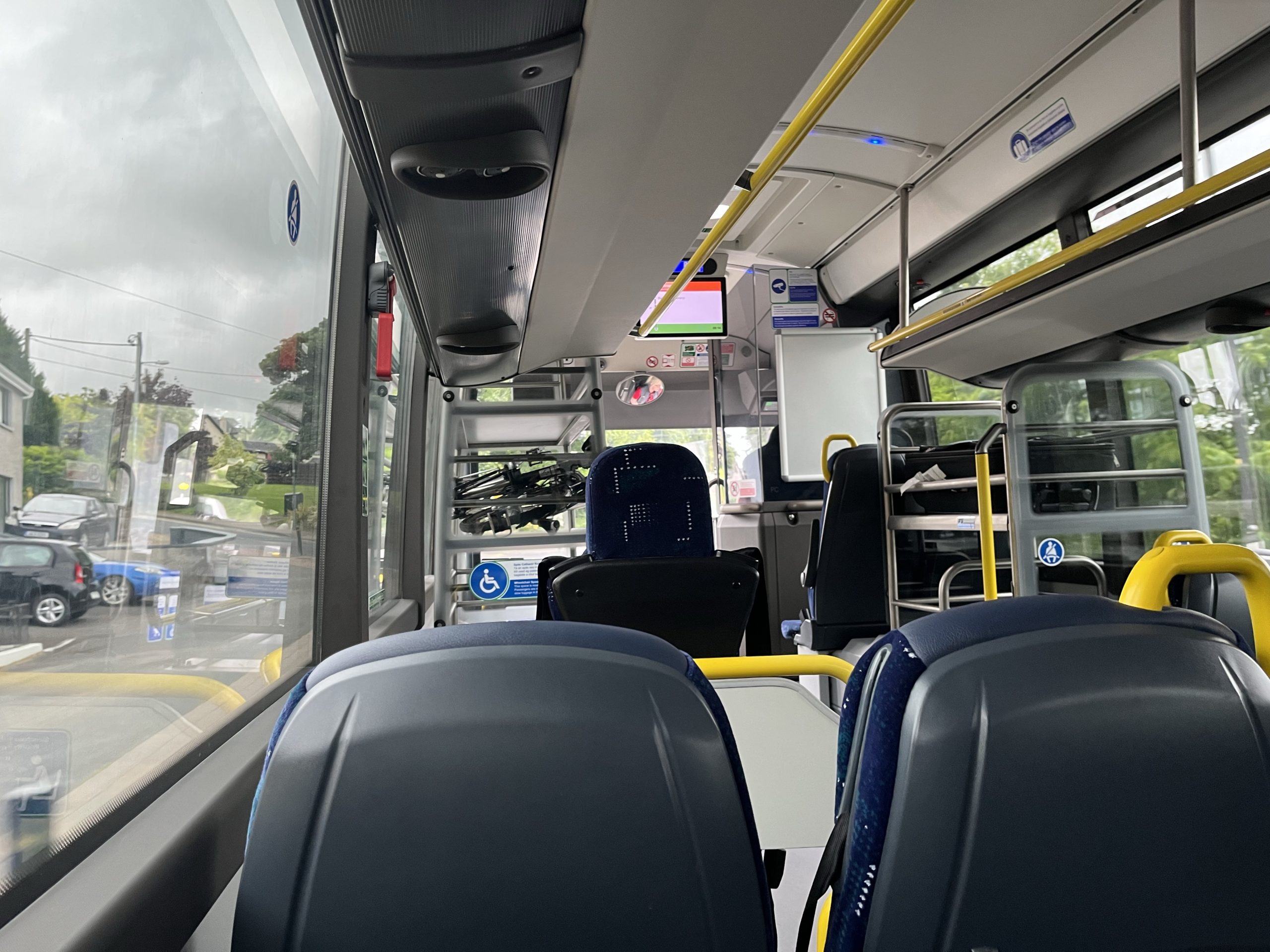
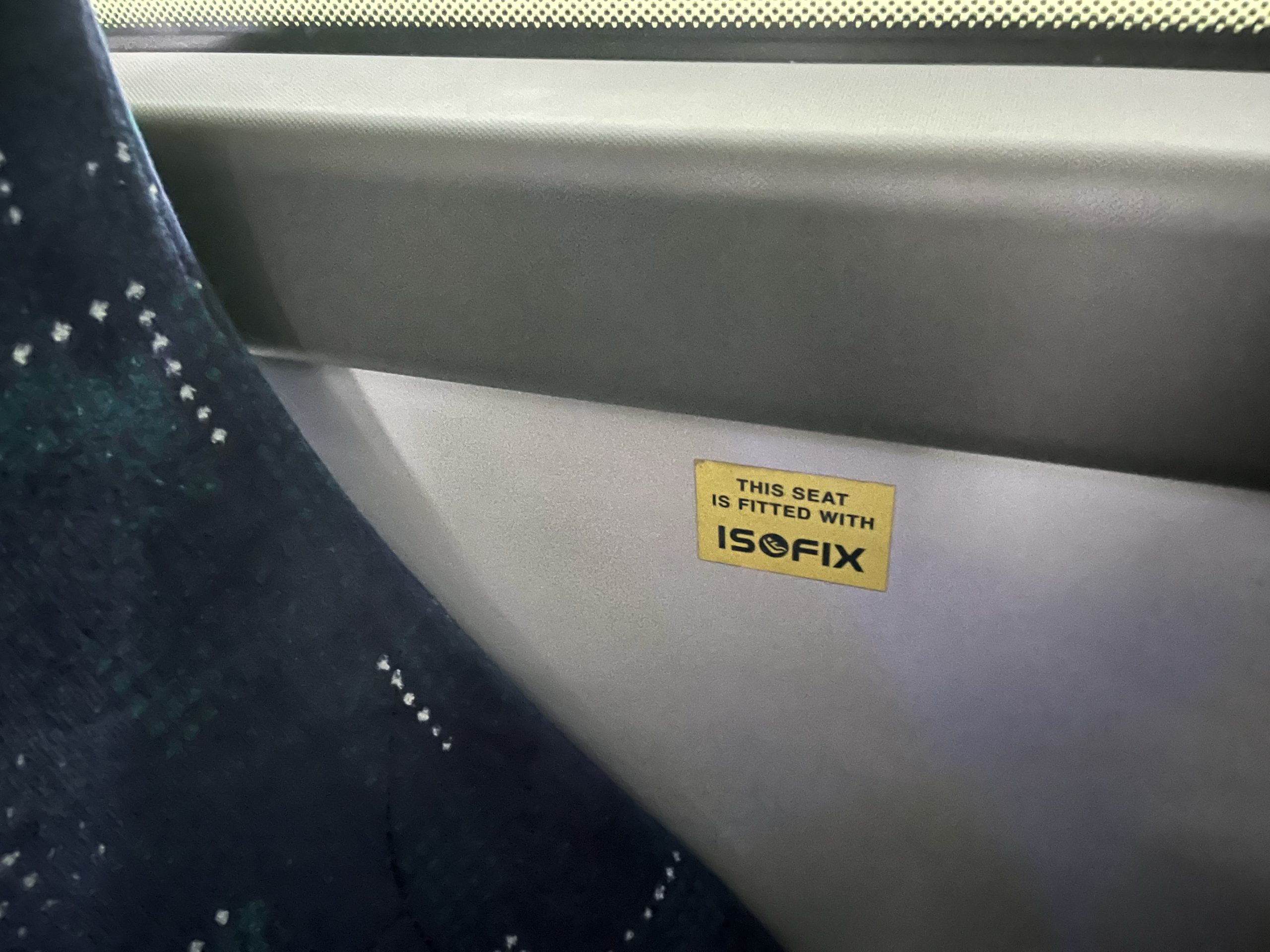
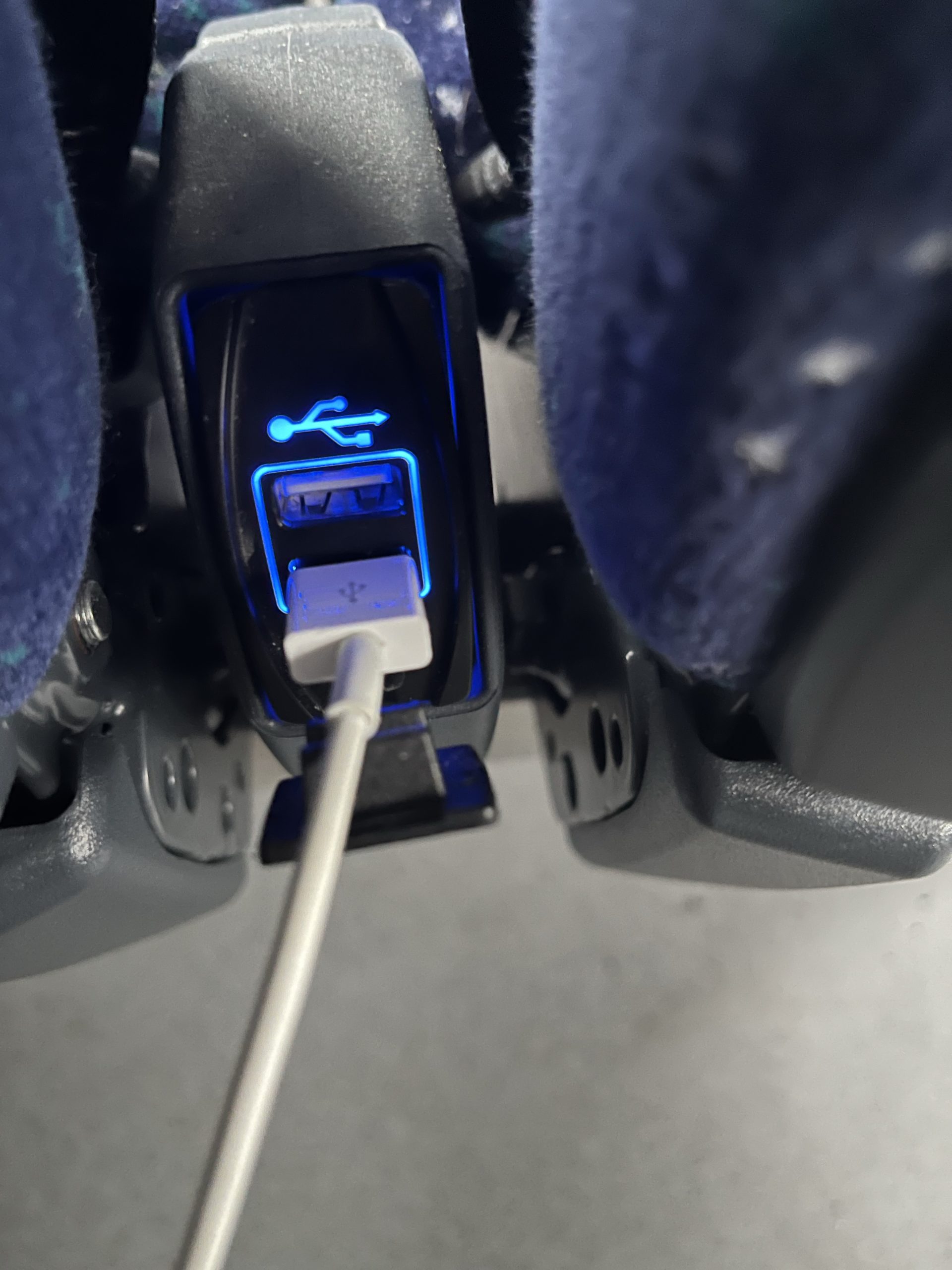
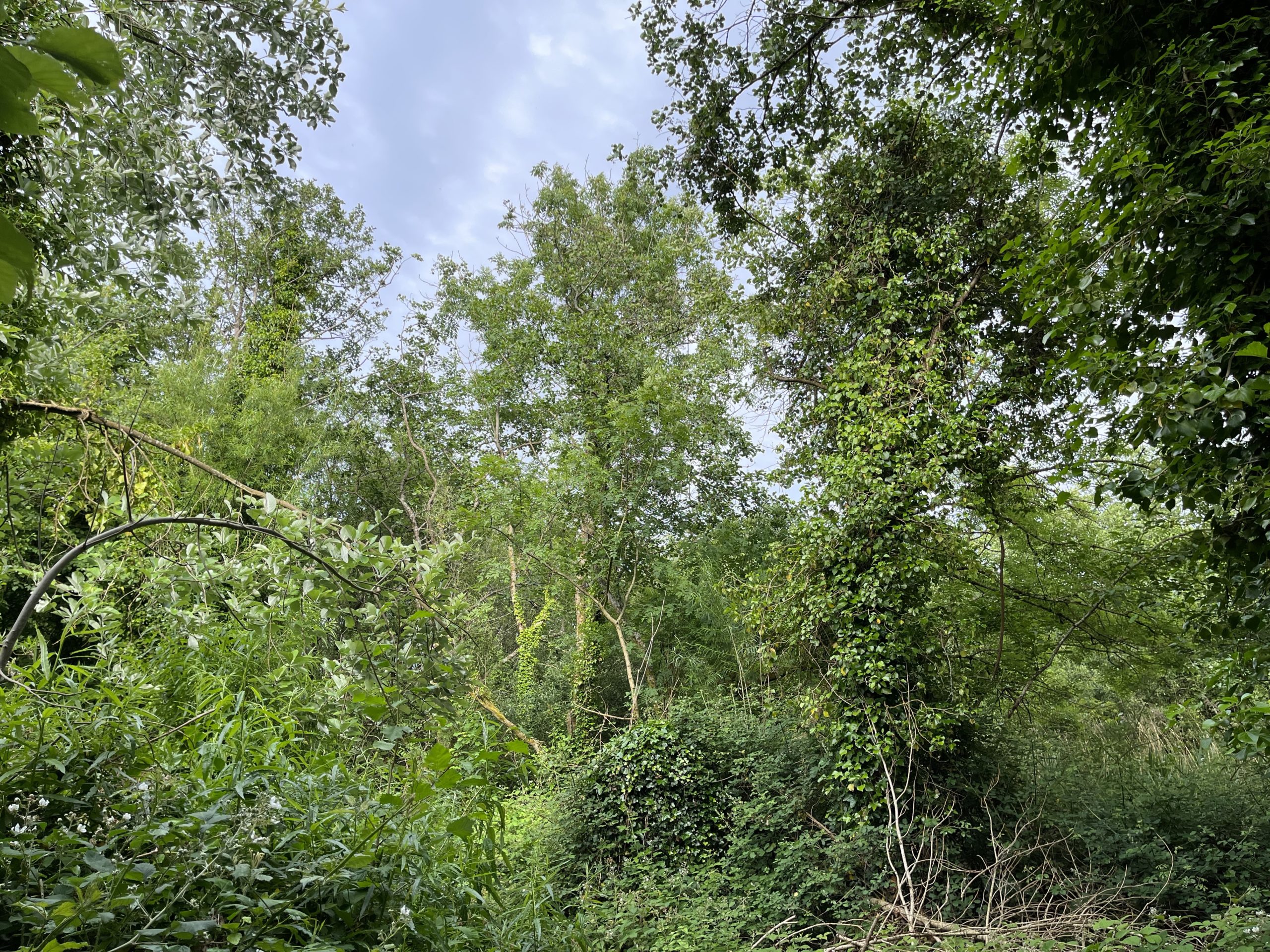
This would have been unthinkable five years ago: a major employer in Limerick has put in a submission to an active travel scheme asking for better cycling infrastructure.
A DIY vehicle speed detector would be really useful for communities looking to get their streets calmed but good Doppler sensors seem really expensive. This seems like the best bet but it’s over €200. There’s also the OpenCV route but that looks like a lot of faff.
New blog post: Submission on Fr Russell Road Cycle Scheme Phase 1
In places where not many people cycle, those who cycle tend to be overwhelmingly male (and trips are mostly for work). Where lots of people cycle, it’s often more females than males cycling (and an equal split between work and non-work trips). Interesting paper in the journal Transport Reviews.


Today’s the last day for submissions on the revised draft of the Limerick Shannon Metropolitan Area Transport Strategy. Here’s mine.
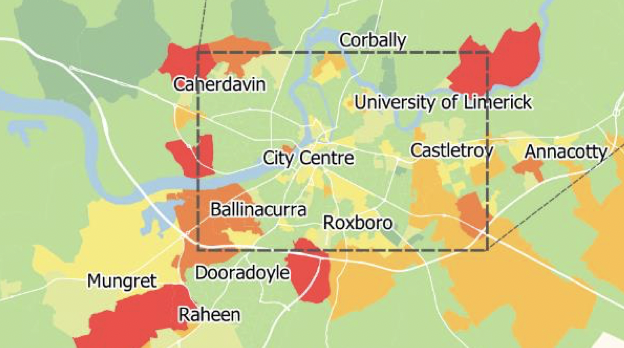
This is a lovely workbook (PDF) with creative ideas to help people walk better, and overcome some of the barriers to walking: I also think that it is a useful resource for those tasked with designing walkable environments.
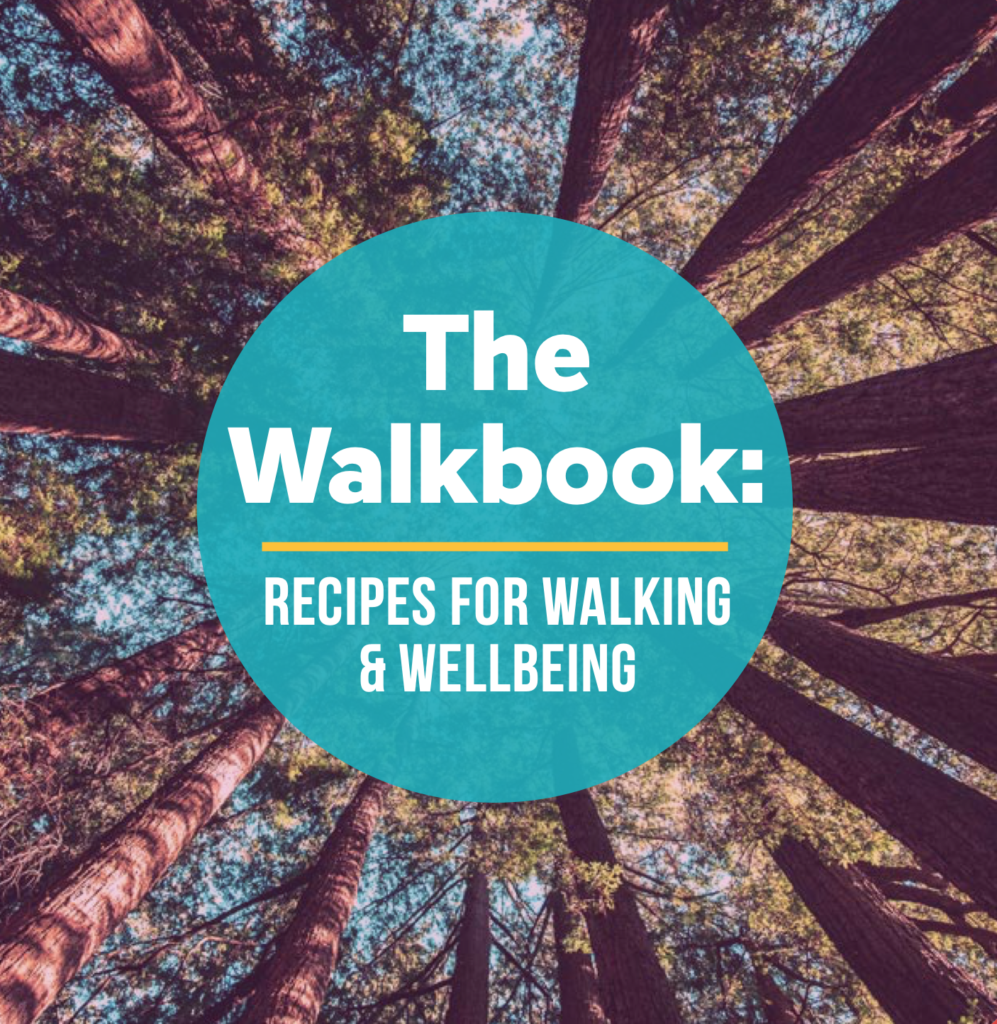
Very interesting paper from researchers from UCC about “retail sprawl” in Irish cities and the effect of out of town shopping centres on greenhouse gas emissions. Notable that Dublin/Cork/Limerick have far bigger problems than Galway/Waterford.
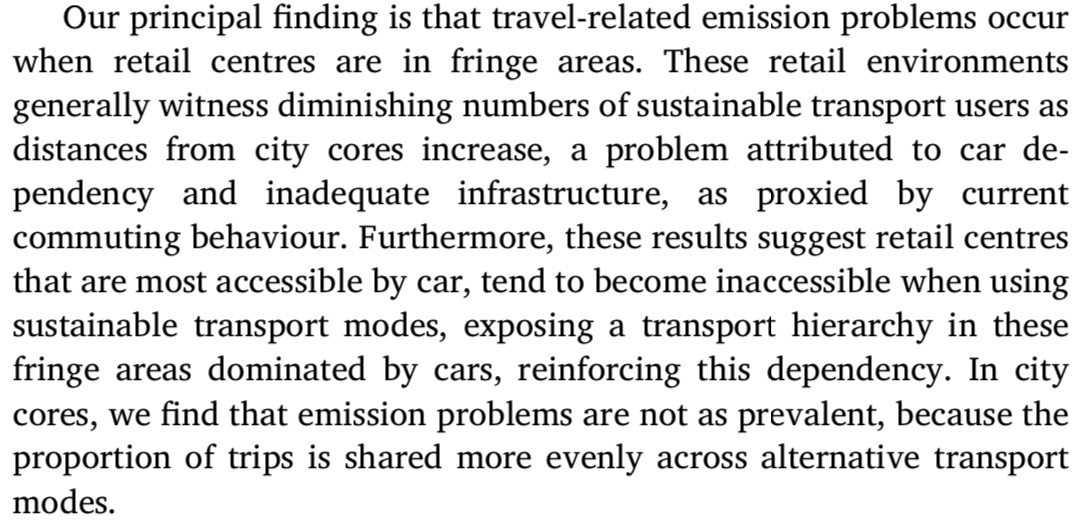
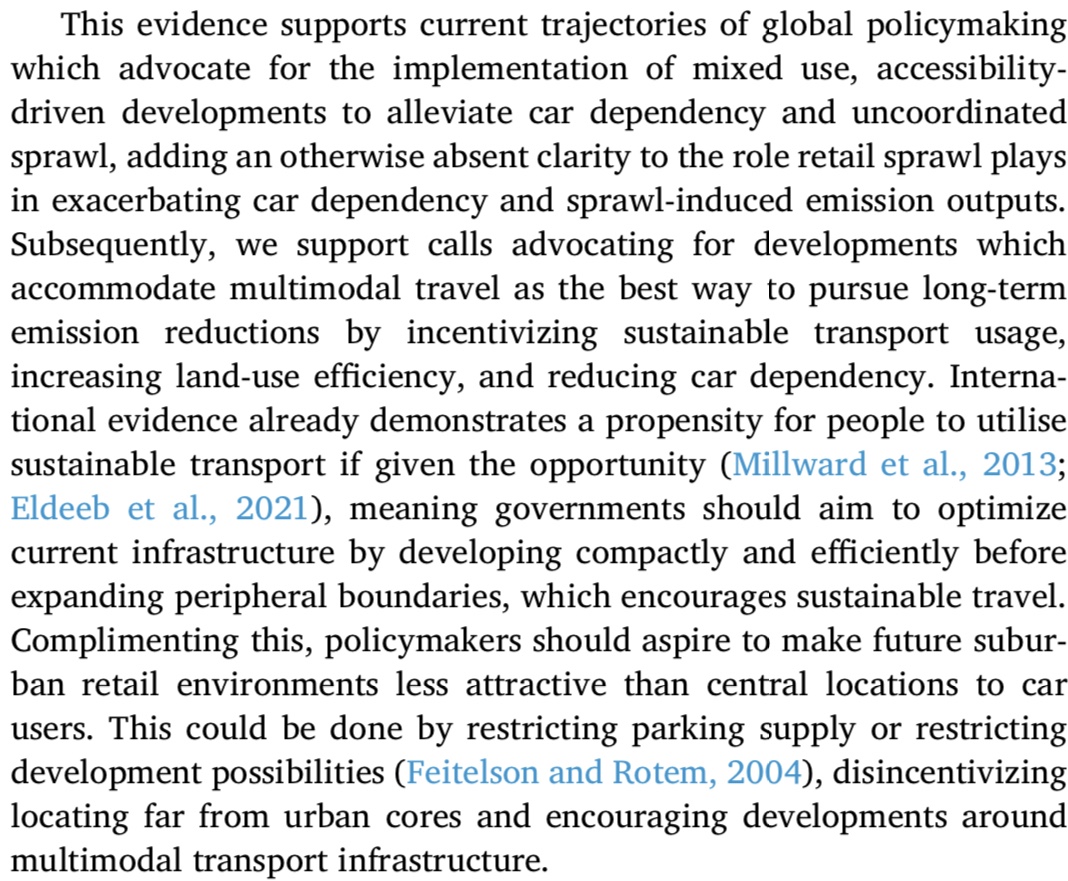
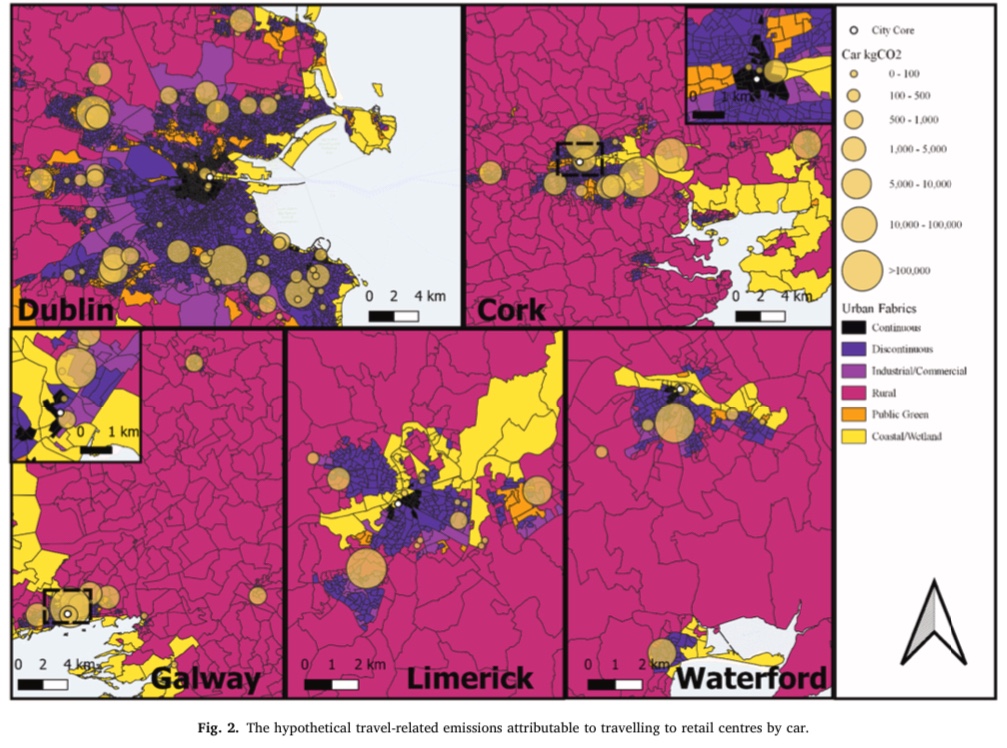
These Waterford rural bus posters (from a set of 11) are beautiful. Well done Local Link Waterford for making me want to hop on a bus and visit!
